The Tejano Alphabet Book, 2020.
Acrylic, gouache, watercolor, and inkjet printed on a handmade hardbound text-block.
This book was produced for an undergraduate fine arts senior project.
By appropriating the style and format of a children’s book, The Tejano Alphabet Book is a reflection on and culmination of a childhood spent in occupied Yanaguana, Somi S’ek (i.e. modern-day San Antonio, Texas) from the eyes of the artist far from home. The book utilizes the alphabet to tell the story of Tejano culture and life in south Texas through vibrant images of cultural staples and figures from buñuelos to Selena Quintanilla Pérez. The narrative is overly simplified to evoke the shoddy, propagandistic education system put in place by the Republicans (read: white man) in power to suppress and force assimilation upon Indigenous and Latino communities across the state. Here the power dynamic becomes reversed wherein the Tejano becomes the teacher. Furthermore, the format reinforces the idea that no culture can be distilled down into something as simple as a children’s book, and that education is the major battleground that is key to building a better Texas. Stamped on the cover is the iconic Alamo, a reminder of some of the early injustices against our communities at the hands of American colonizers and a sort of branding that signals to us the work is not done yet – not while there are still spectacles of war on the Alamo Plaza.
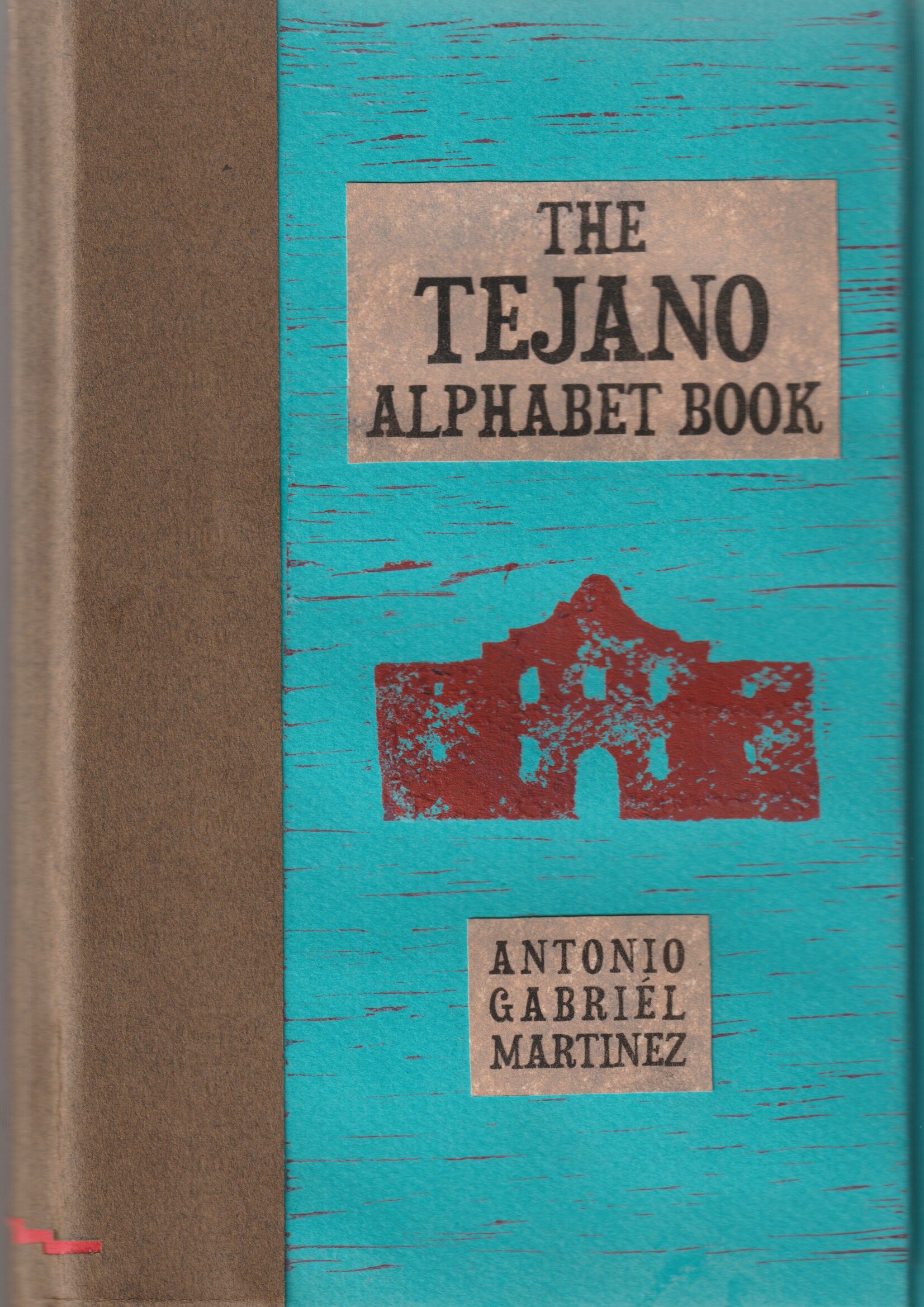
THE TEJANO ALPHABET BOOK by ANTONIO GABRIÉL MARTINEZ
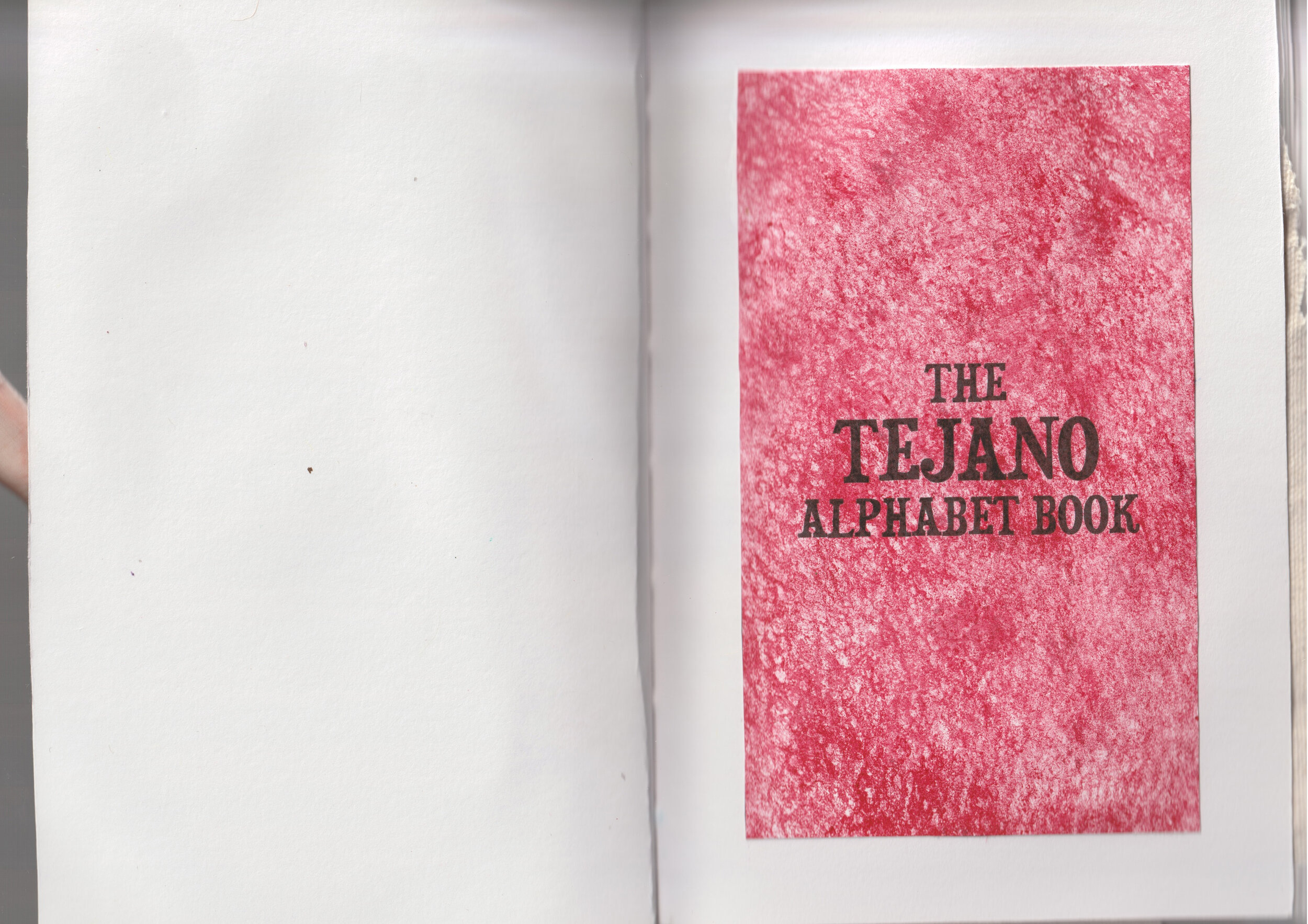
THE TEJANO ALPHABET BOOK
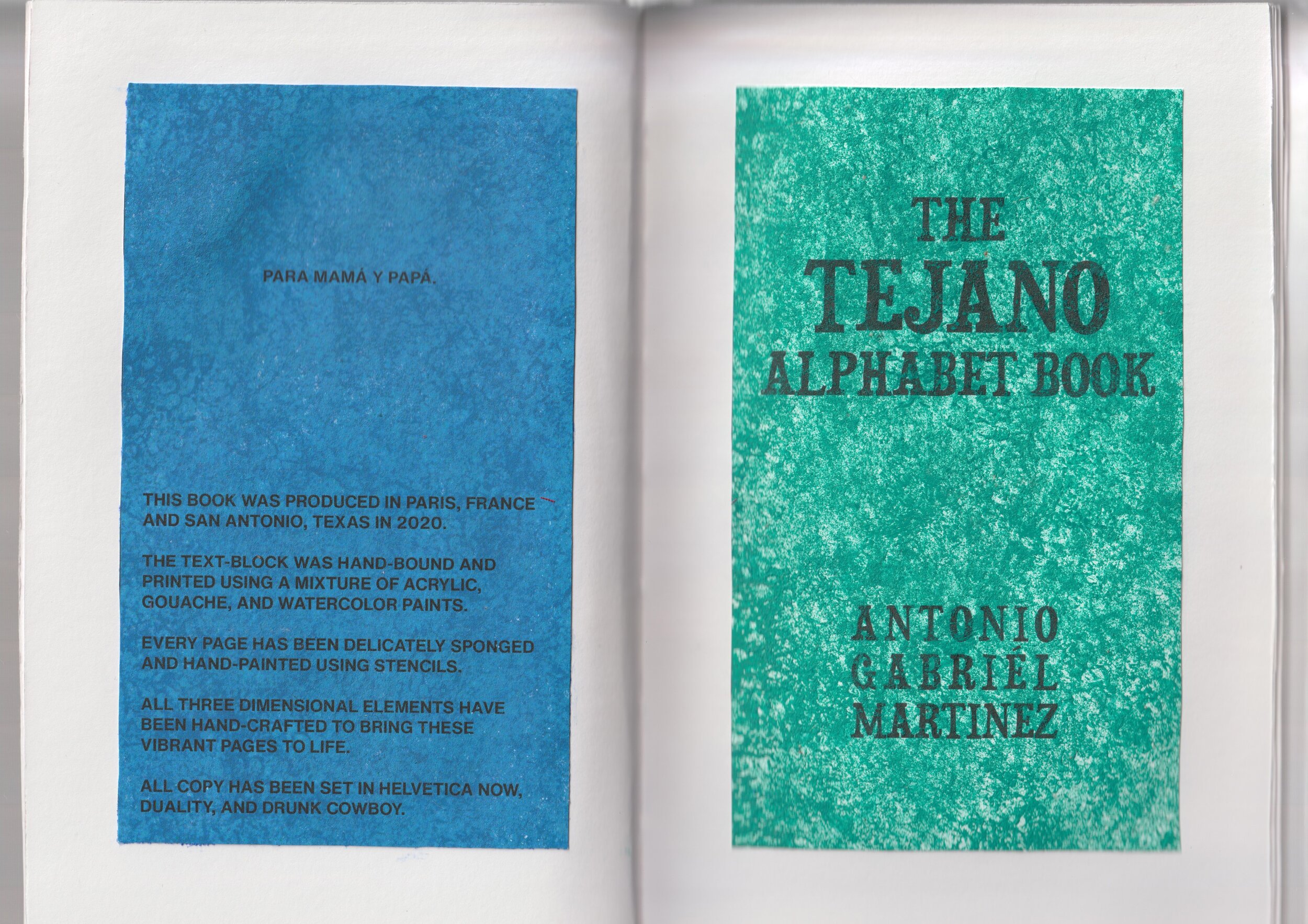
PARA MAMA Y PAPÁ. THIS BOOK WAS PRODUCED IN PARIS, FRANCE AND SAN ANTONIO, TEXAS IN 2020. THE TEXT-BLOCK WAS HAND-BOUND AND PRINTED USING A MIXTURE OF ACRYLIC, GOUACHE, AND WATERCOLOR PAINTS. EVERY PAGE HAS BEEN DELICATELY SPONGED AND HAND-PAINTED USING STENCILS. ALL THREE DIMENSIONAL ELEMENTS HAVE BEEN HAND-CRAFTED TO BRING THESE VIBRANT PAGES TO LIFE. ALL COPY HAS BEEN SET IN HELVETICA NOW, DUALITY, AND DRUNK COWBOY.
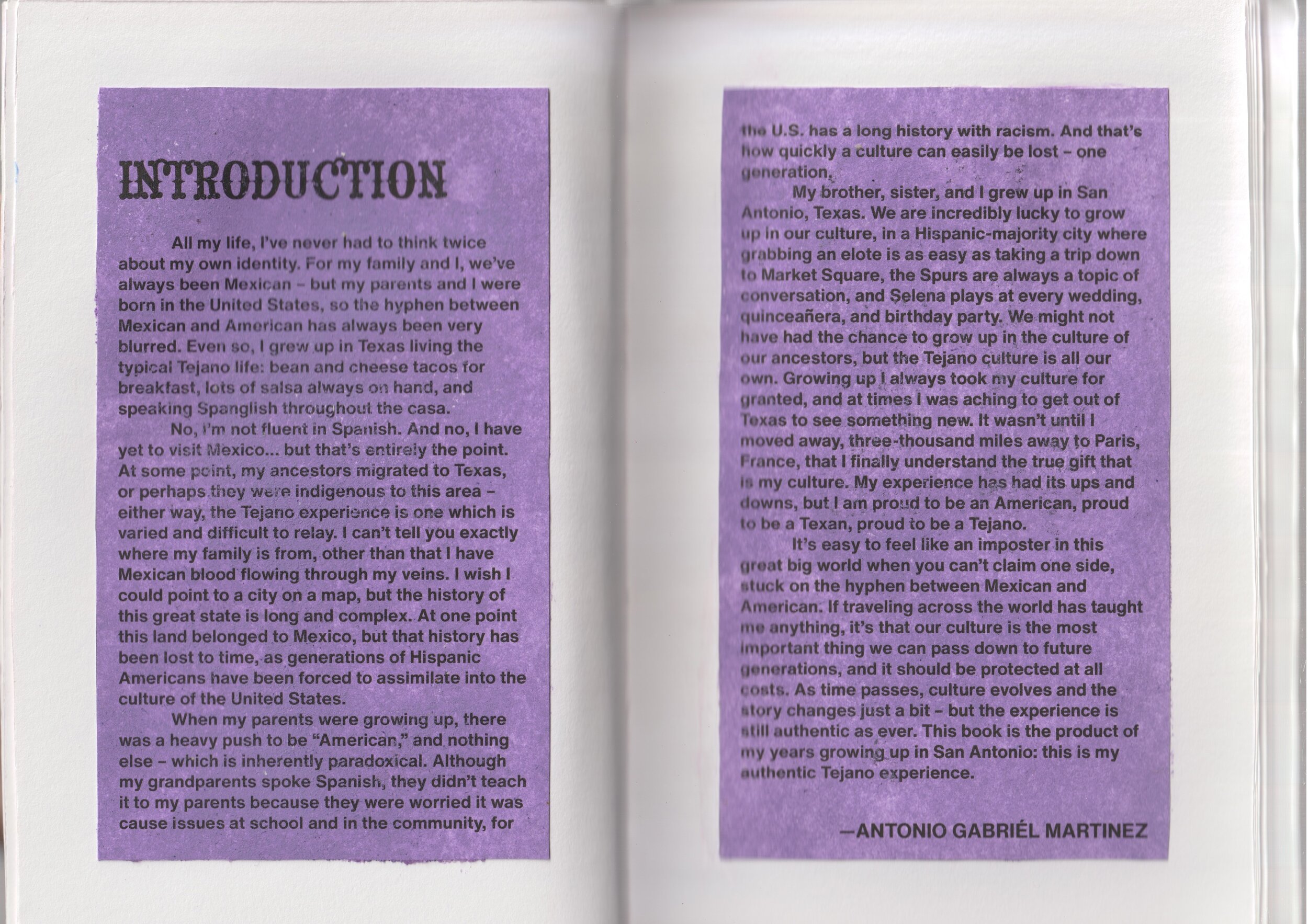
INTRODUCTION. All my life, I've never had to think twice about my own identity. For my family and I, we've always been Mexican – but my parents and I were born in the United States, so the hyphen between Mexican and American has always been very blurred. Even so, I grew up in Texas living the typical Tejano life: bean and cheese tacos for breakfast, lots of salsa always on hand, and speaking Spanglish throughout the casa. No, I'm not fluent in Spanish. And no, I have yet to visit Mexico... but that's entirely the point. At some point, my ancestors migrated to Texas, or perhaps they were indigenous to this area – either way, the Tejano experience is one which is varied and difficult to relay. I can't tell you exactly where my family is from, other than that I have Mexican blood flowing through my veins. I wish I could point to a city on a map, but the history of this great state is long and complex. At one point this land belonged to Mexico, but that history has been lost to time, as generations of Hispanic Americans have been forced to assimilate into the culture of the United States. When my parents were growing up, there was a heavy push to be "American," and nothing else – which is inherently paradoxical. Although my grandparents spoke Spanish, they didn't teach it to my parents because they were worried it was cause issues at school and in the community, for the U.S. has a long history with racism. And that's how quickly a culture can easily be lost - one generation. My brother, sister, and I grew up in San Antonio, Texas. We are incredibly lucky to grow up in our culture, in a Hispanic-majority city where grabbing an elote is as easy as taking a trip down to Market Square, the Spurs are always a topic of conversation, and Selena plays at every wedding, quinceañera, and birthday party. We might not have had the chance to grow up in the culture of our ancestors, but the Tejano culture is all our own. Growing up I always took my culture for granted, and at times I was aching to get out of Texas to see something new. It wasn't until I moved away, three-thousand miles away to Paris, France, that I finally understand the true gift that is my culture. My experience has had its ups and downs, but I am proud to be an American, proud to be a Texan, proud to be a Tejano. It's easy to feel like an imposter in this great big world when you can't claim one side, stuck on the hyphen between Mexican and American. If traveling across the world has taught me anything, it's that our culture is the most important thing we can pass down to future generations, and it should be protected at all costs. As time passes, culture evolves and the story changes just a bit – but the experience is still authentic as ever. This book is the product of my years growing up in San Antonio: this is my authentic Tejano experience. –ANTONIO GABRIÉL MARTINEZ
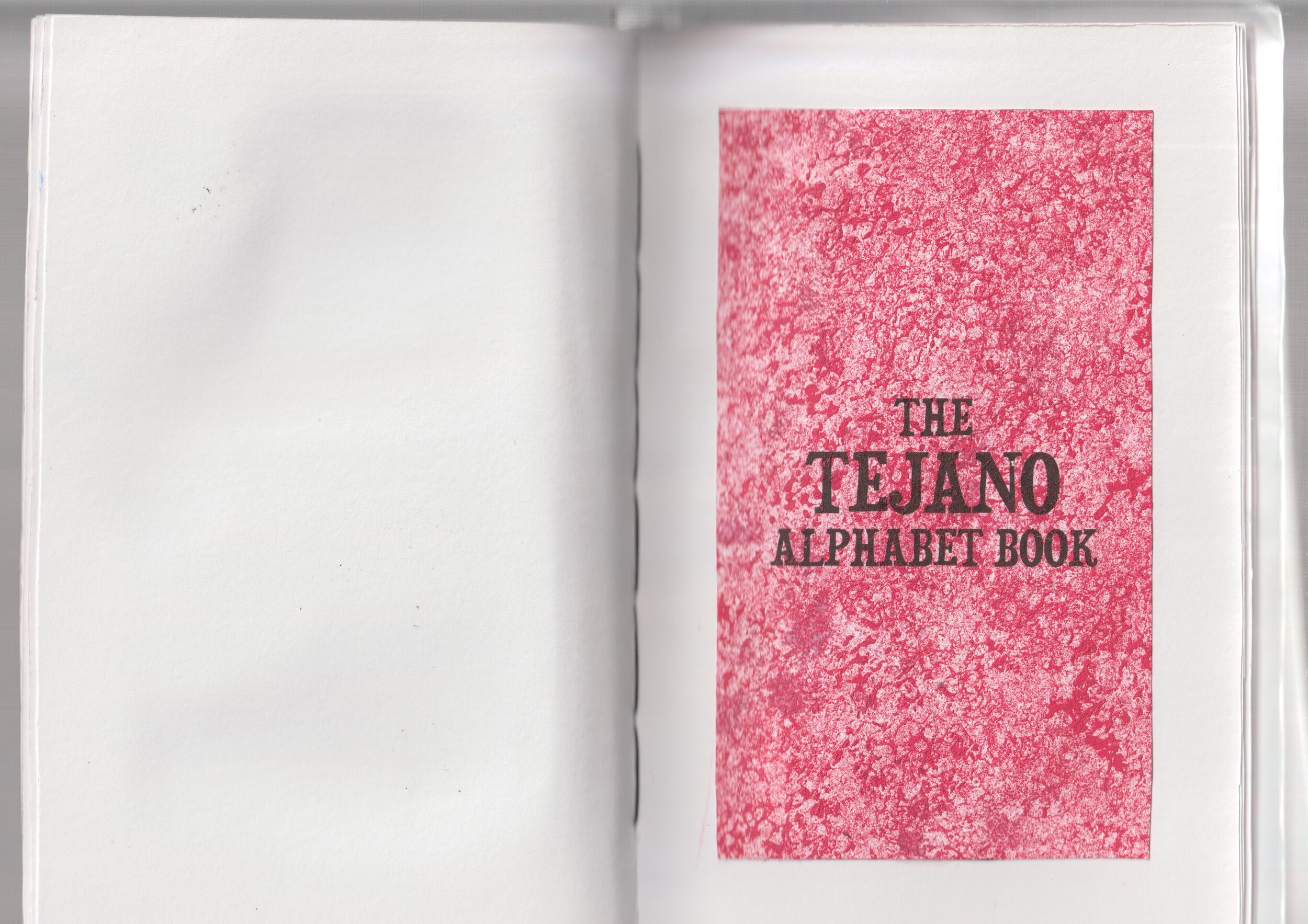
THE TEJANO ALPHABET BOOK
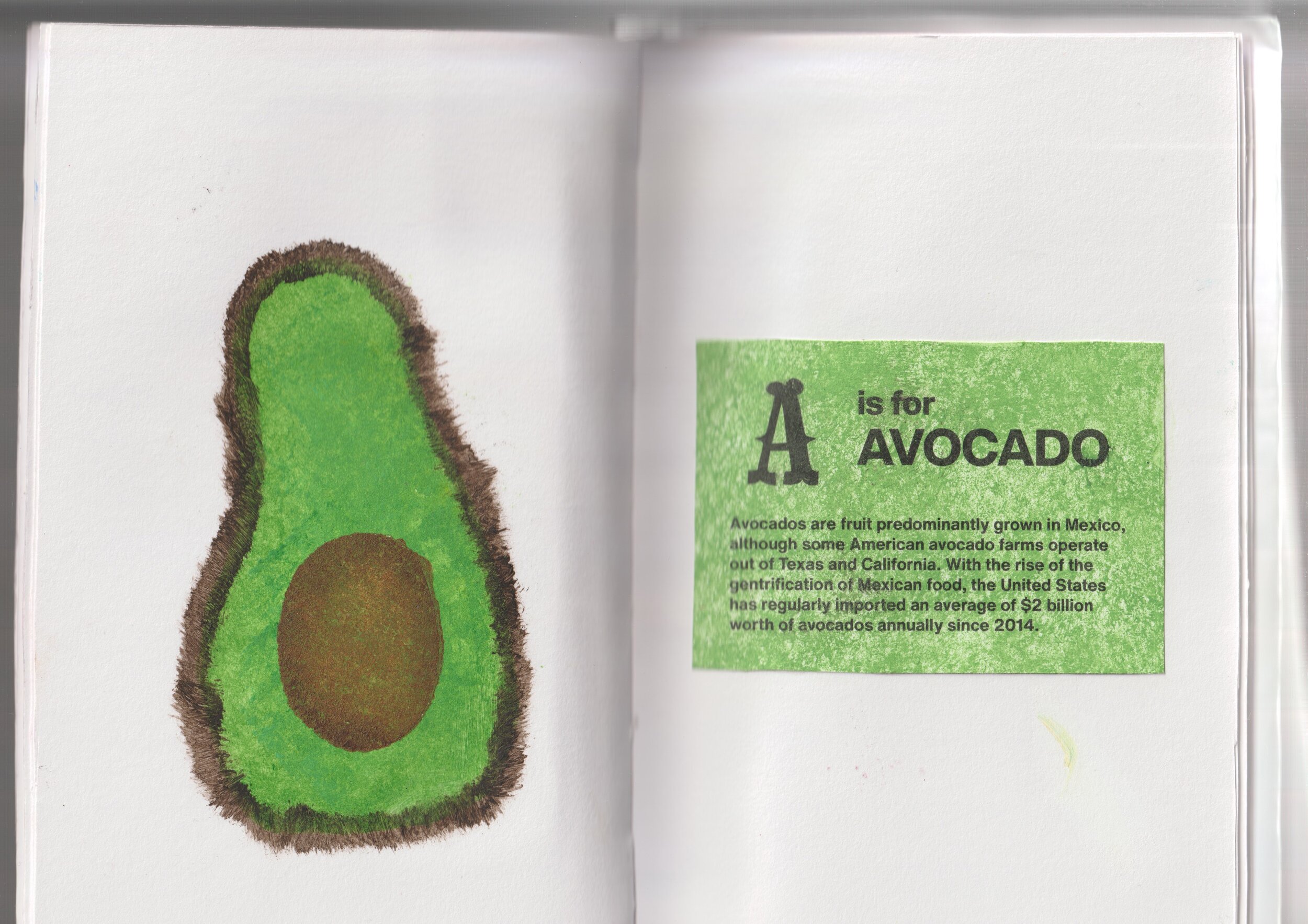
A is for AVOCADO. Avocados are fruit predominantly grown in Mexico, although some American avocado farms operate out of Texas and California. With the rise of the gentrification of Mexican food, the United States has regularly imported an average of $2 billion worth of avocados annually since 2014.
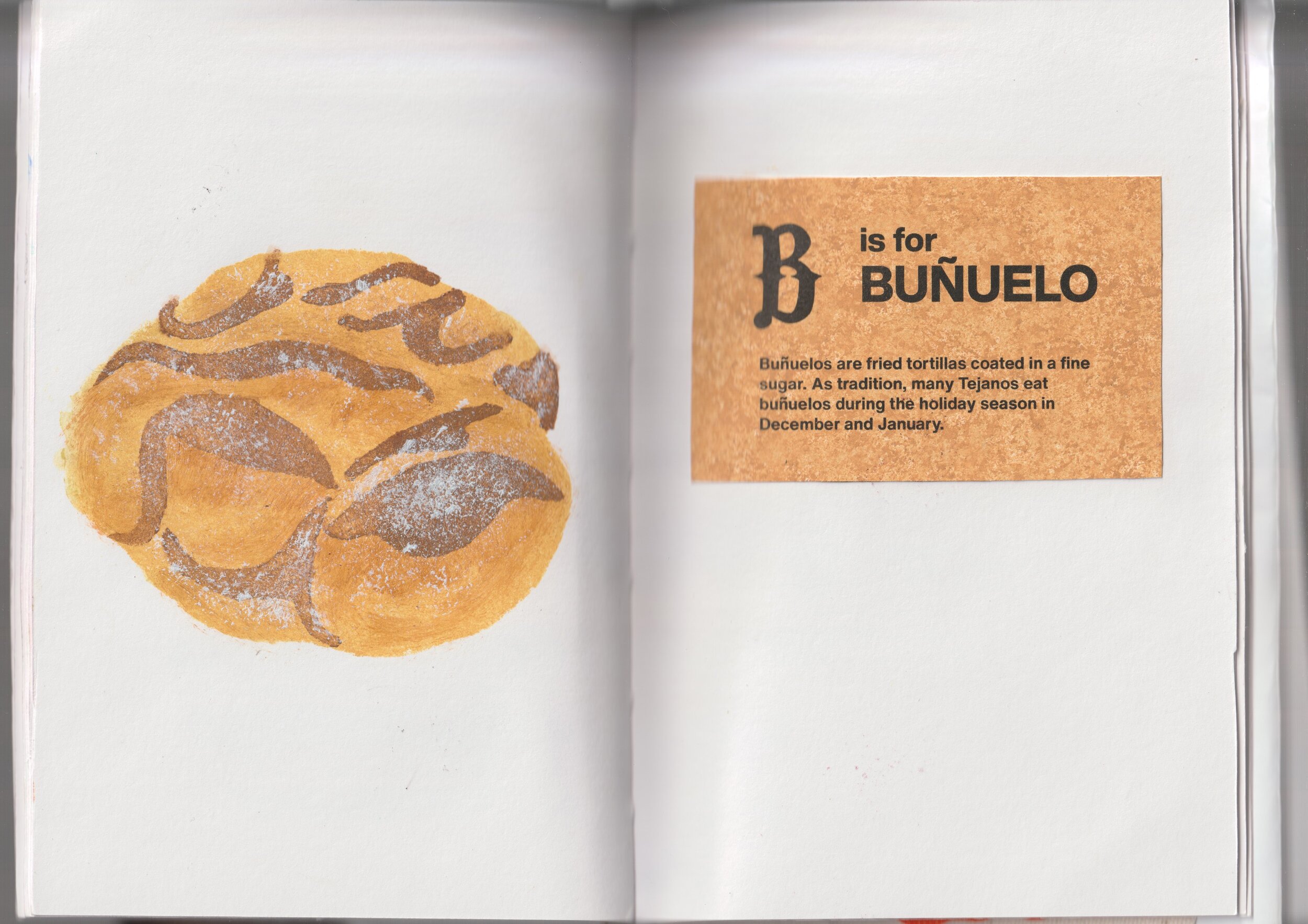
B is for BUÑUELO. Buñuelos are fried tortillas coated in a fine sugar. As tradition, many Tejanos eat buñuelos during the holiday season in December and January.
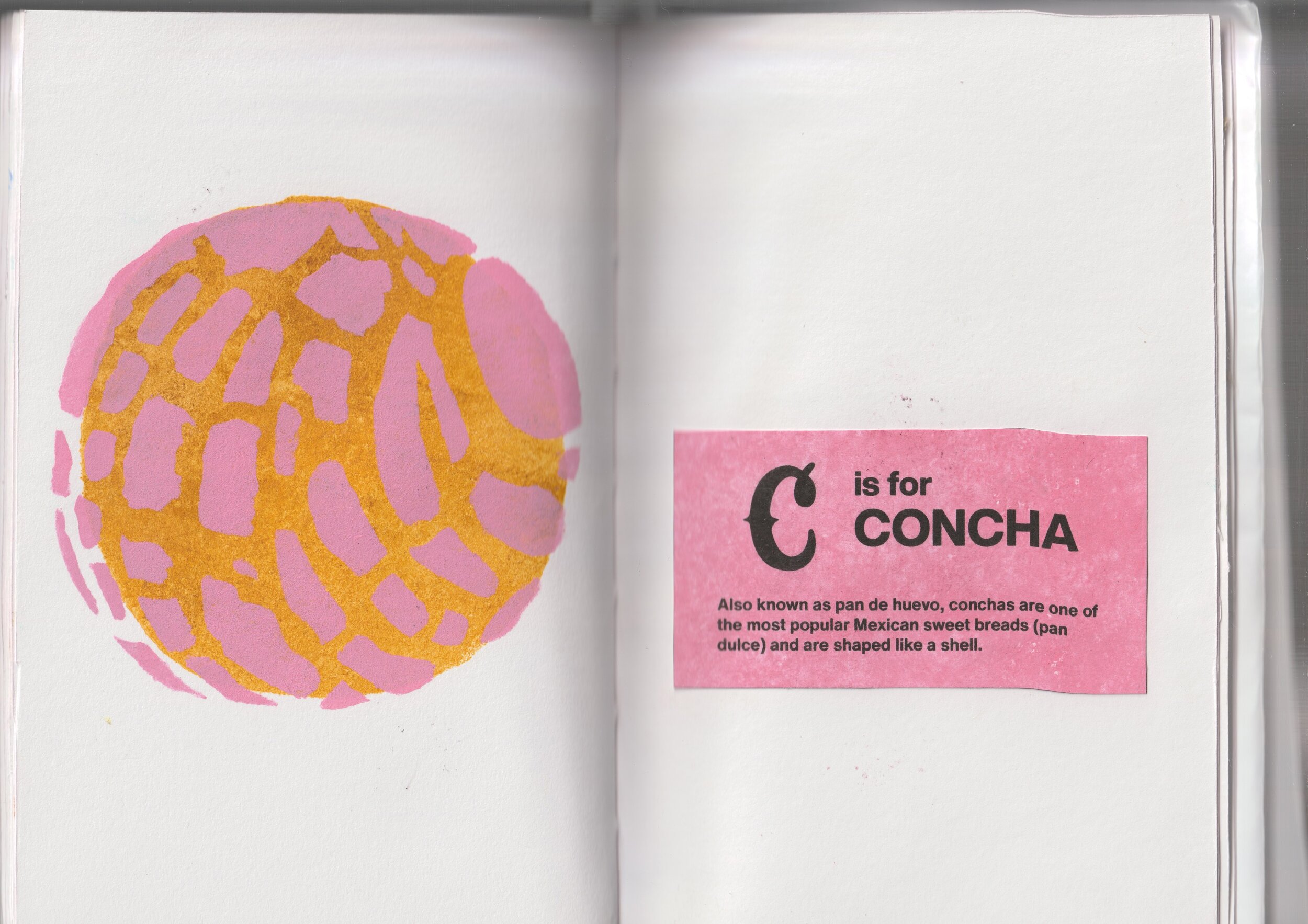
C is for CONCHA. Also known as pan de huevo, conchas are one of the most popular Mexican sweet breads (pan dulce) and are shaped like a shell.
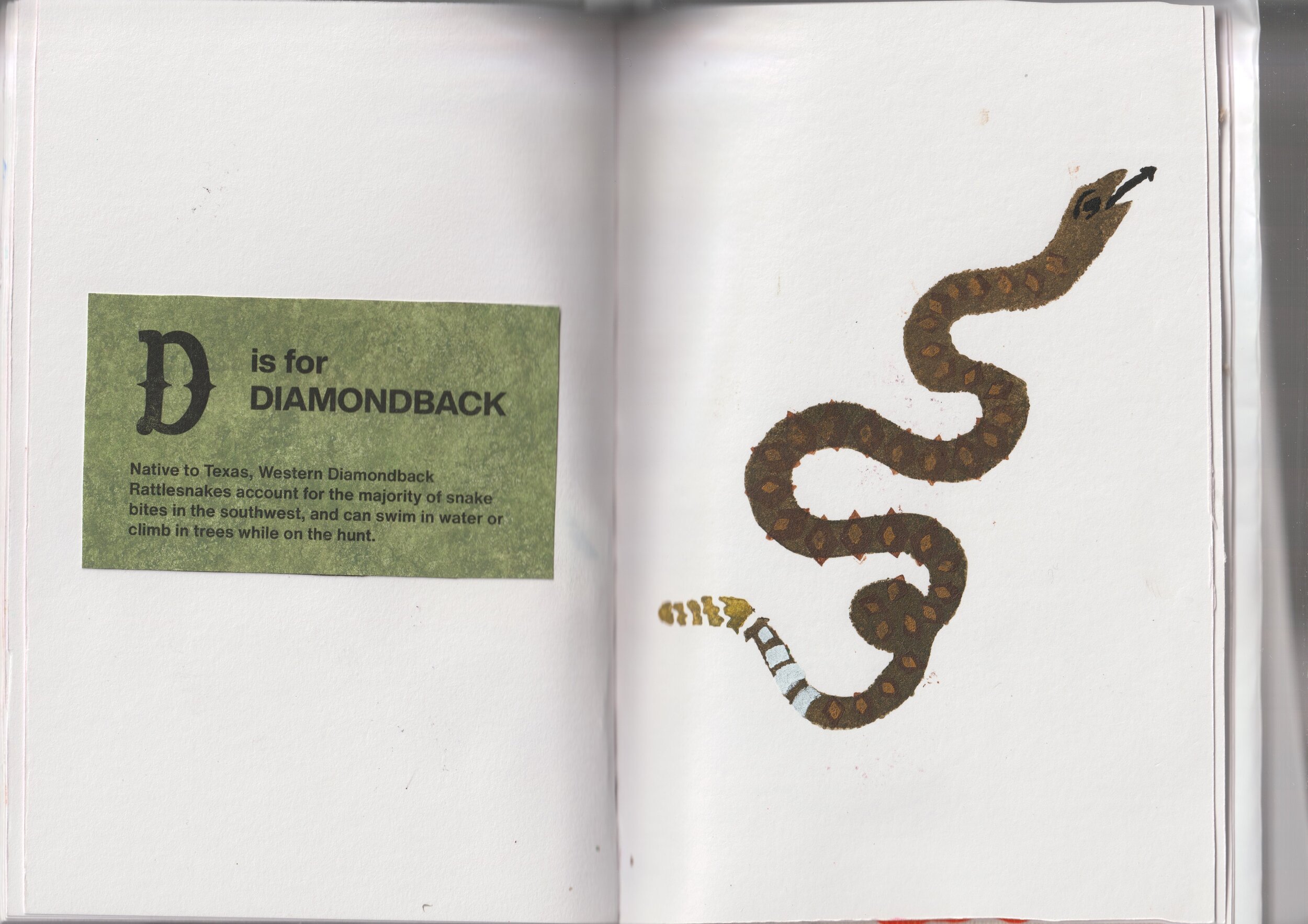
D is for DIAMONDBACK. Native to Texas, Western Diamondback Rattlesnakes account for the majority of snake bites in the southwest, and can swim in water or climb in trees while on the hunt.
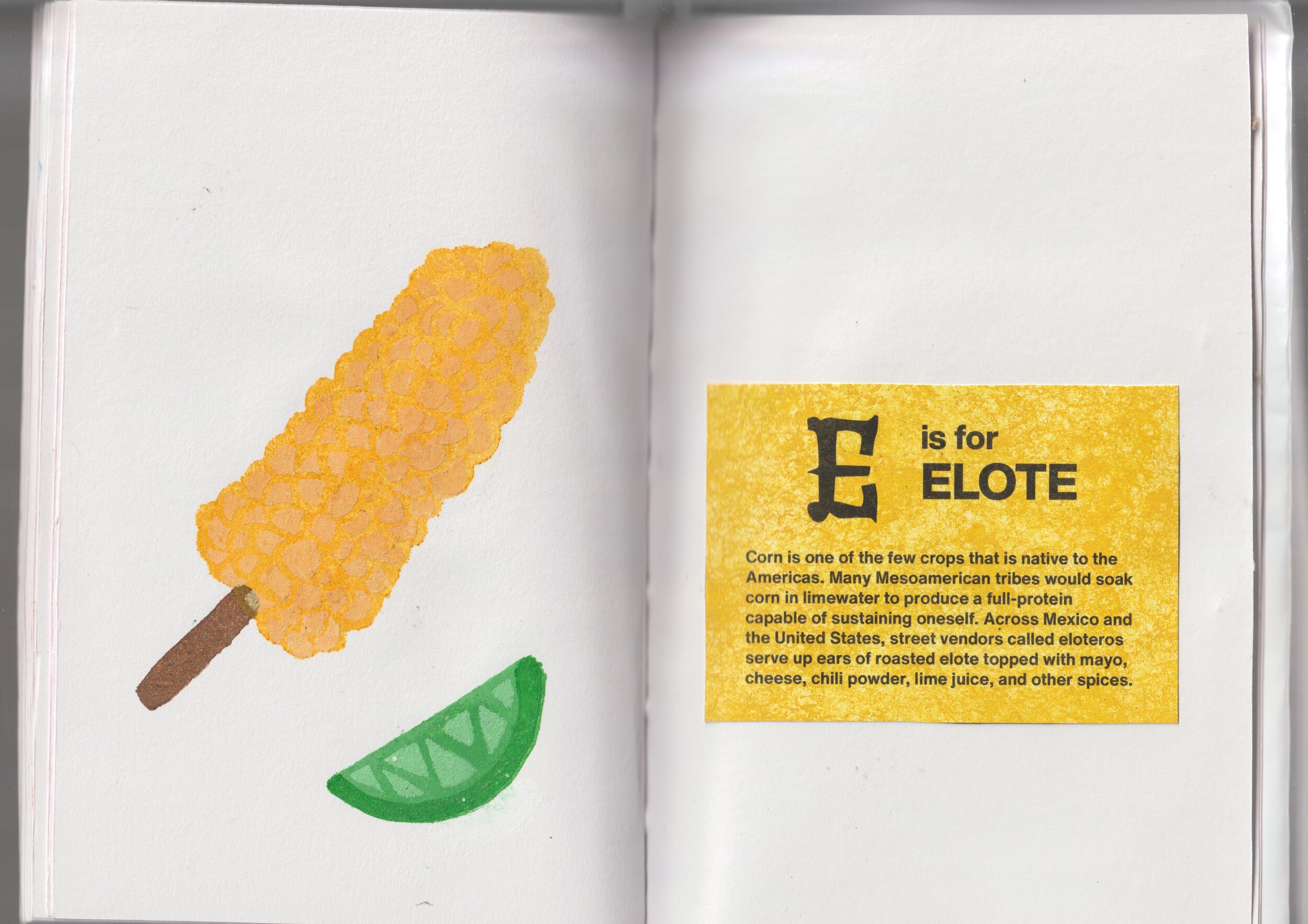
E is for ELOTE. Corn is one of the few crops that is native to the Americas. ManY Mesoamerican tribes would soak corn in limewater to produce a full-protein capable of sustaining oneself. Across Mexico and the United States, street vendors called eloteros serve up ears of roasted elote topped with mayo, cheese, chili powder, lime juice, and other spices.
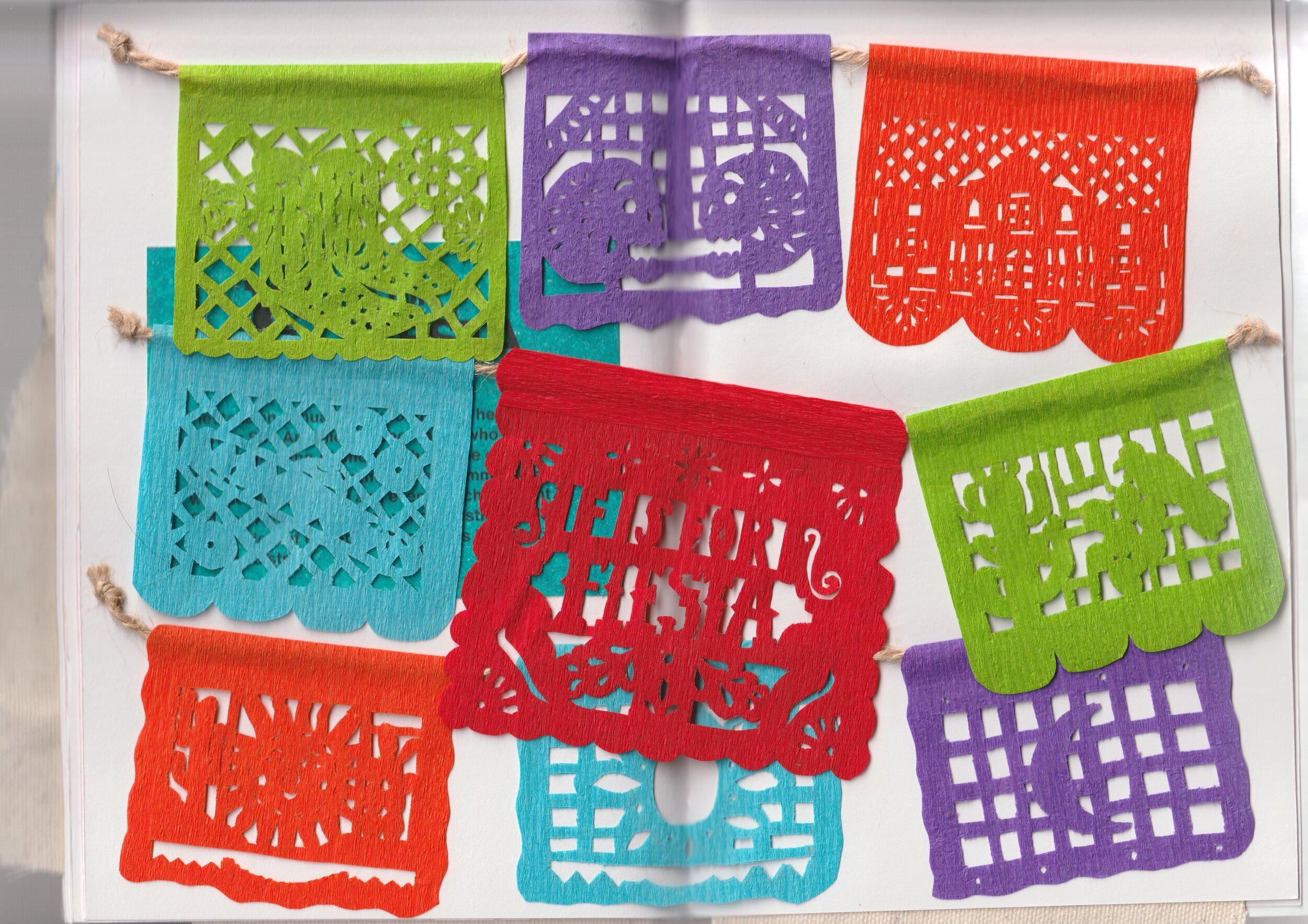
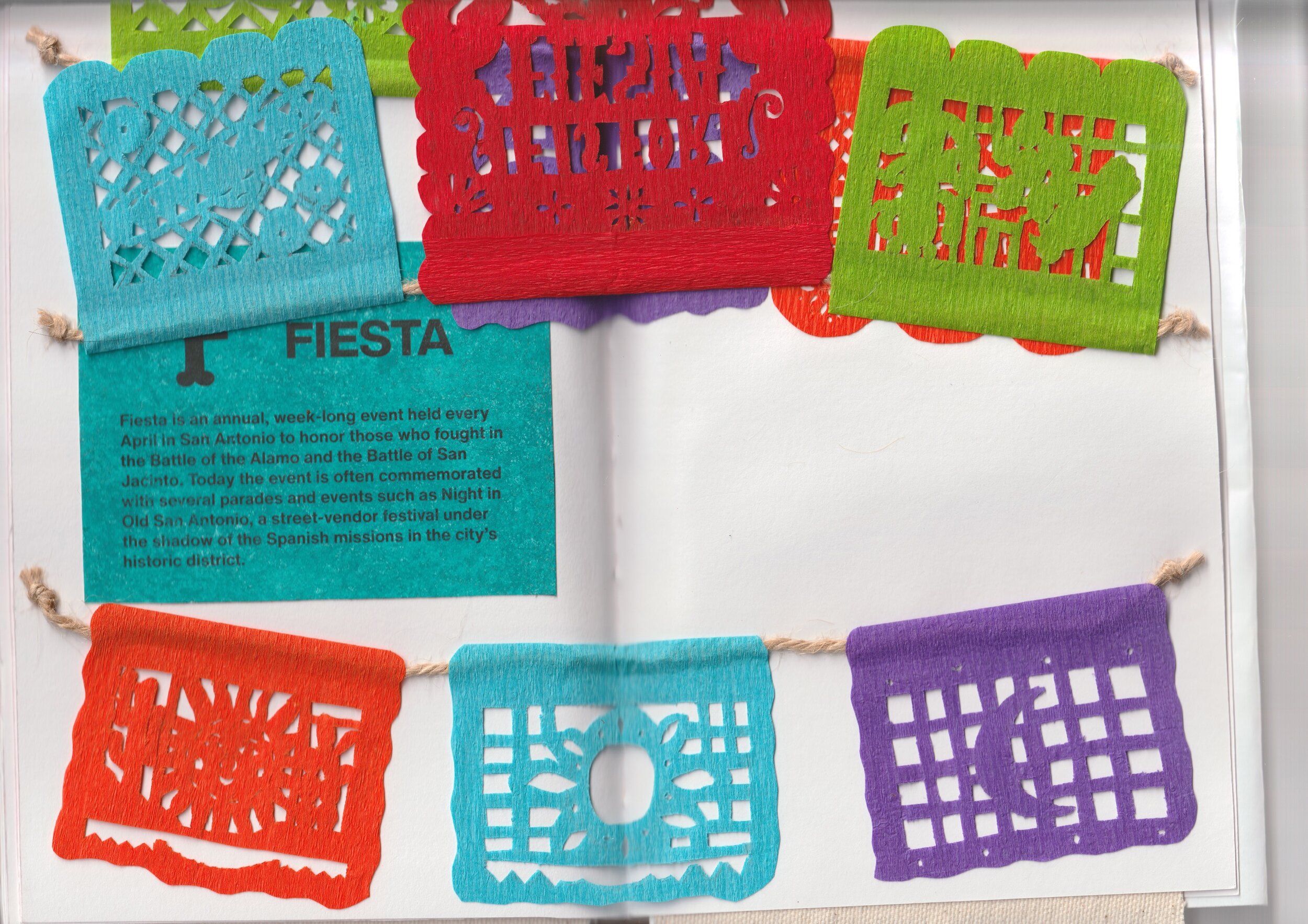
F is for FIESTA. Fiesta Is an annual, week-long event held every April in San Antonio to honor those who fought in the Battle of the Alamo and the Battle of San Jacinto. Today the event is often commemorated with several parades and events such as Night in Old San Antonio, a street-vendor festival under the shadow of the Spanish missions in the city's historic district.
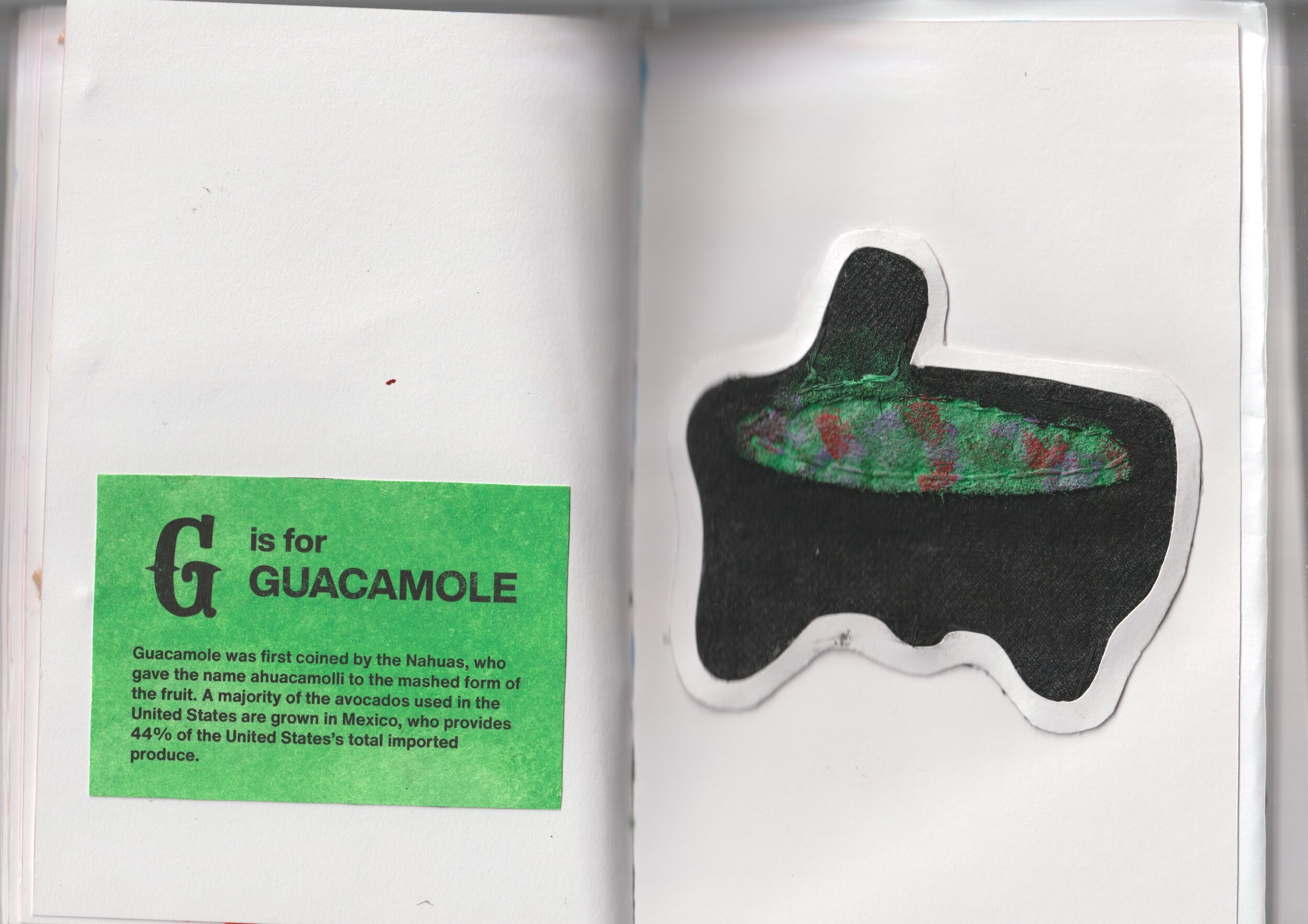
G is for GUACAMOLE. Guacamole was first coined by the Nahuas, who gave the name ahuacamolli to the mashed form of the fruit. A maiority of the avocados used in the United States are grown in Mexico, who provides 44% of the United States's total imported produce.
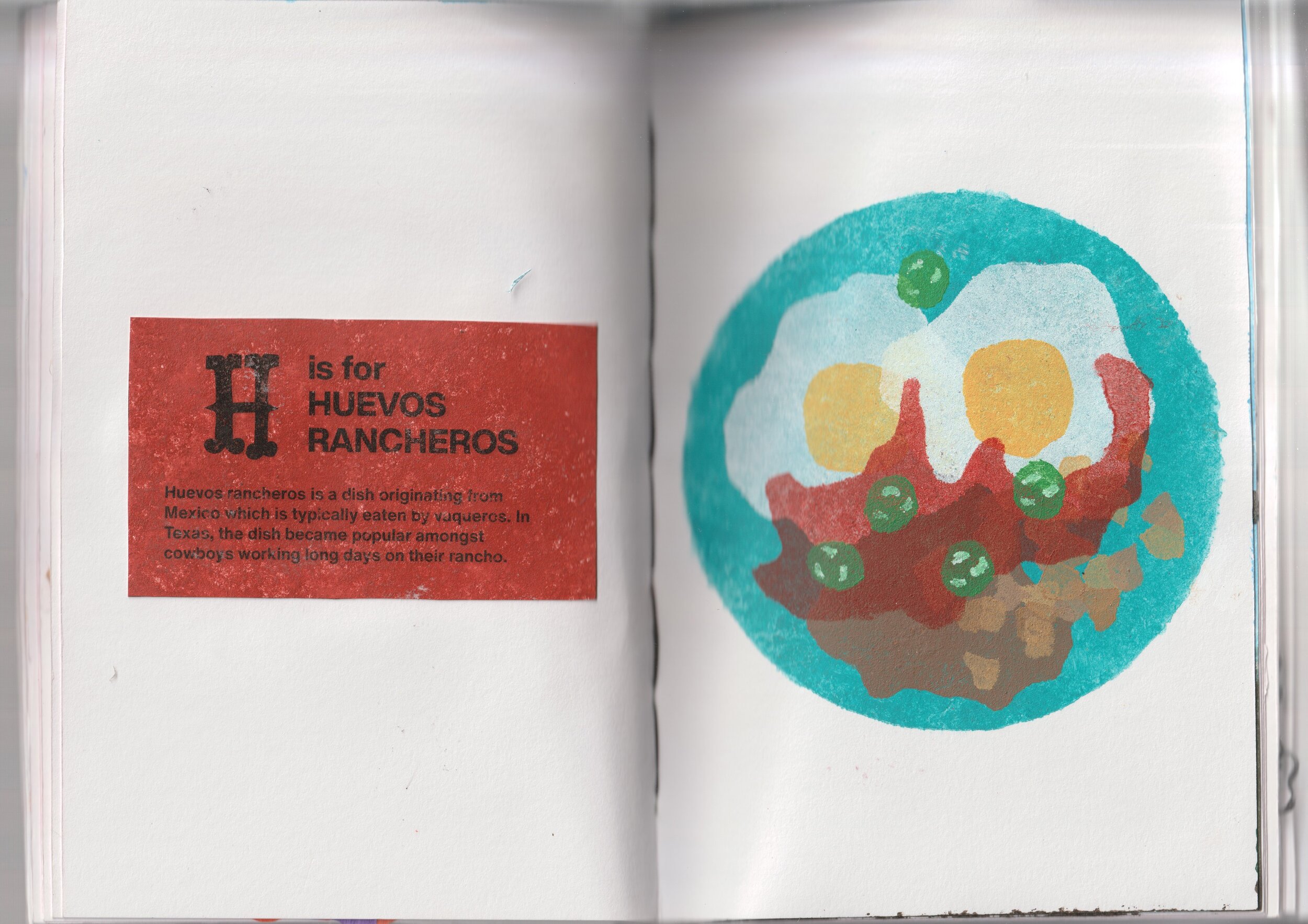
H is for HUEVOS RANCHEROS. Huevos rancheros is a dish originating from Mexico which is typically eaten by vaqueros. In Texas, the dish became popular amongst cowboys working long days on their rancho.

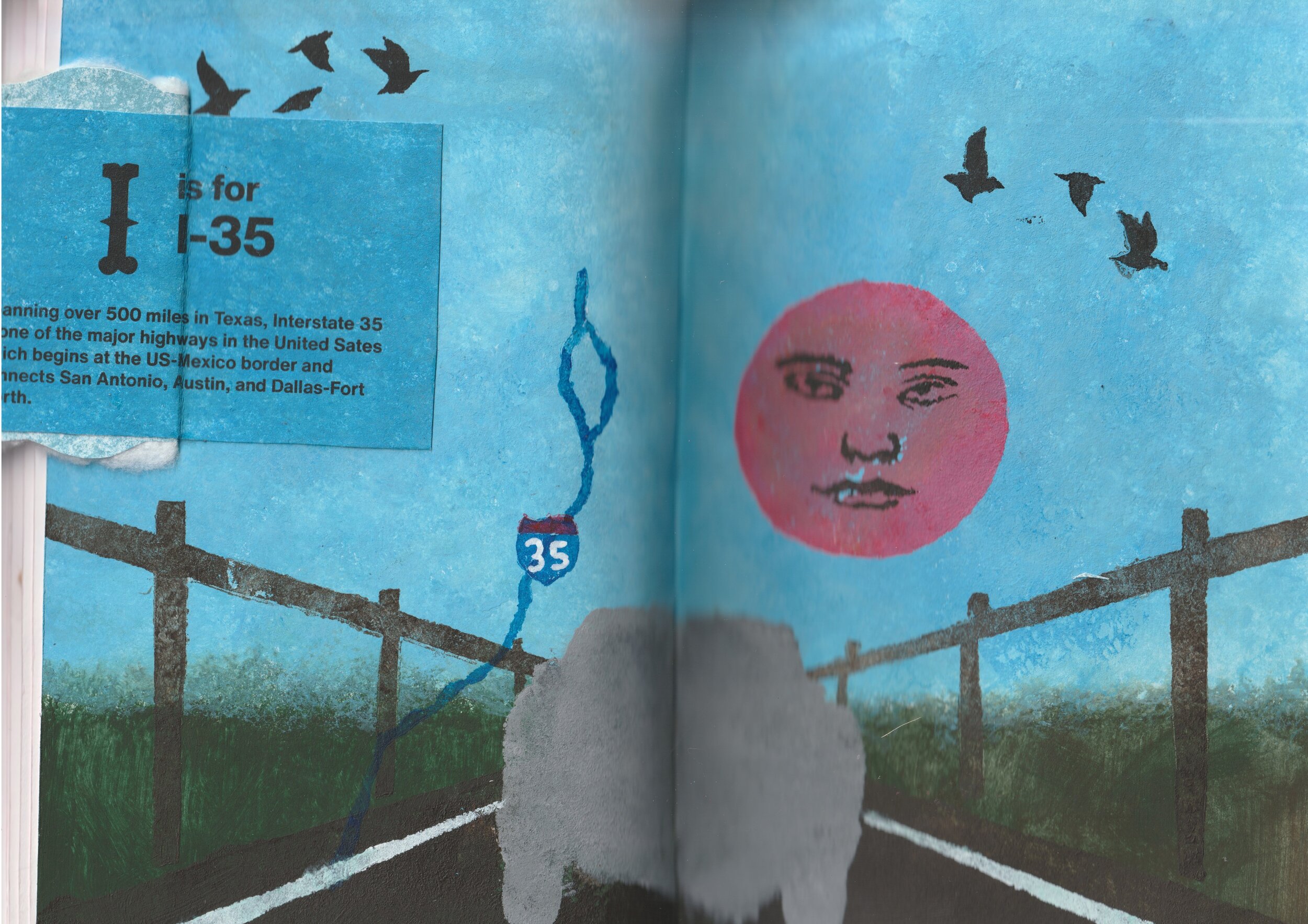
I is for I-35. Spanning over 500 miles in Texas, Interstate 35 is one of the major highways in the United States which begins at the US-Mexico border and connects San Antonio, Austin, and Dallas-Fort Worth.
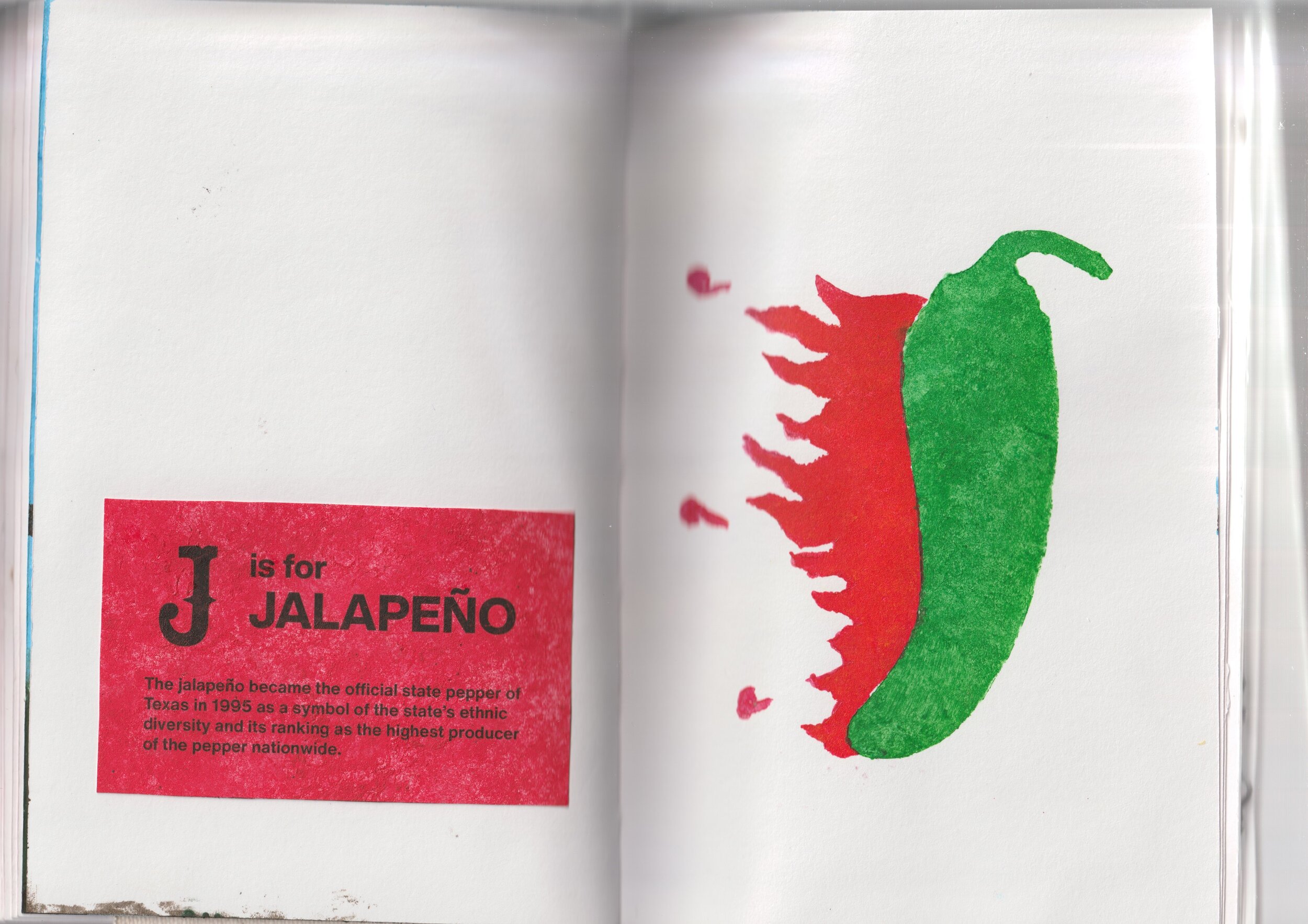
J is for JALAPEÑO. The jalapeño became the official state pepper of Texas in 1995 as a symbol of the state's ethnic diversity and its ranking as the highest producer of the pepper nationwide.
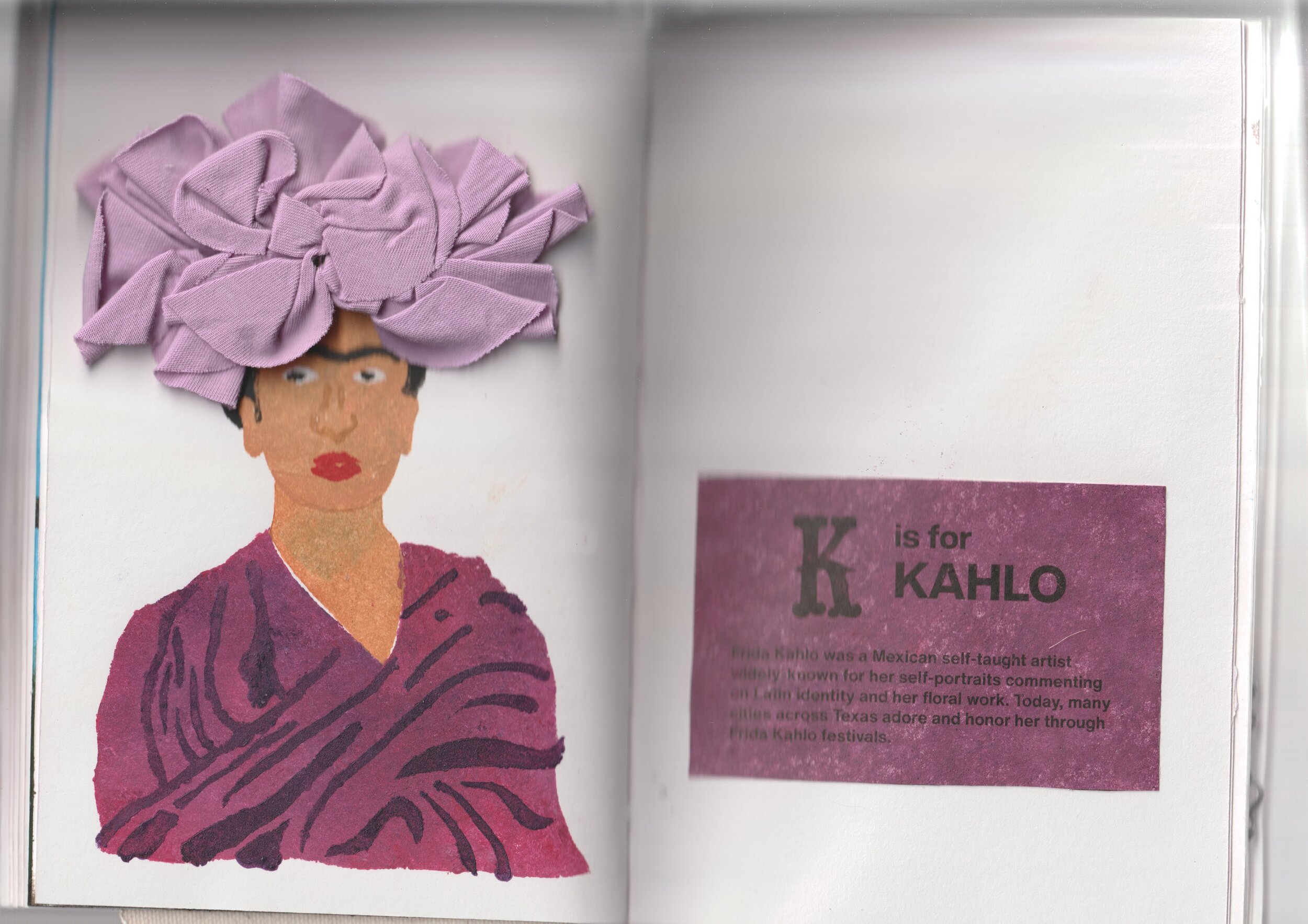
K is for KAHLO. Frida Kahlo was a Mexican self-taught artist widely known for her self-portraits commenting on Latin identity and her floral work. Today, many cities across Texas adore and honor her through Frida Kahlo festivals.
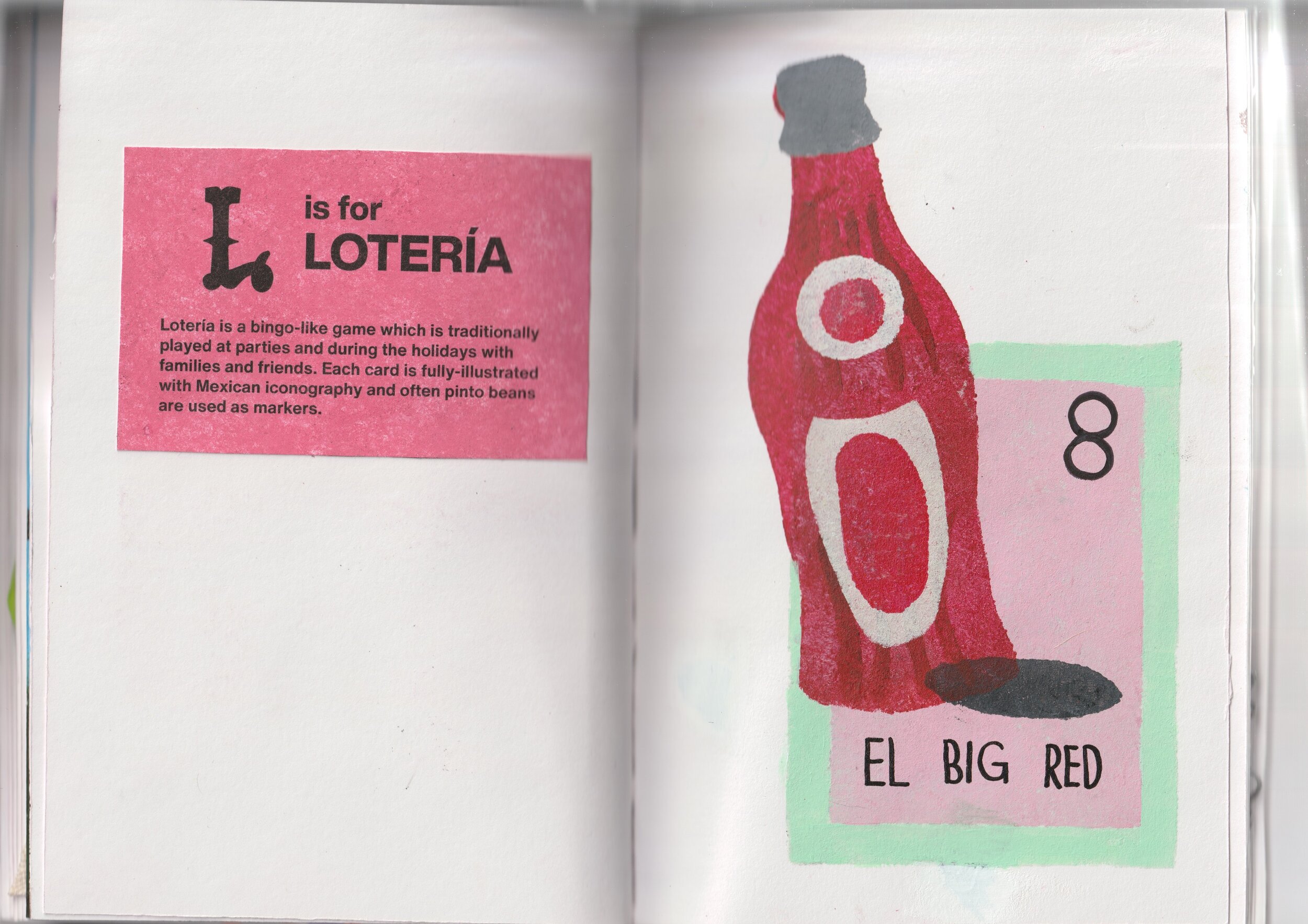
L is for LOTERÍA. Lotería is a bingo-like game which is traditionally played at parties and during the holidays with families and friends. Each card is fully-illustrated with Mexican iconography and often pinto beans are used as markers.
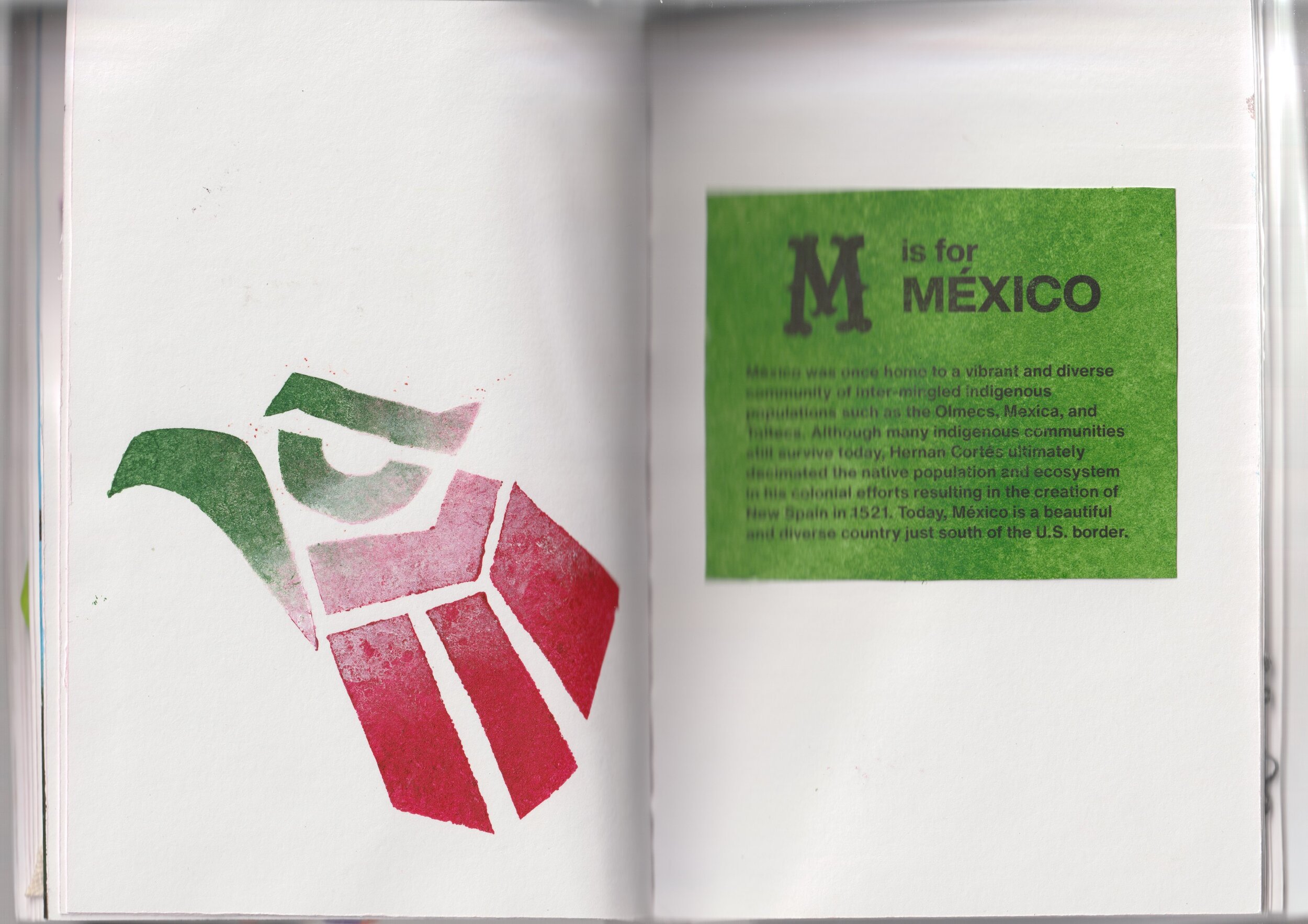
M is for MÉXICO. México was once home to a vibrant and diverse community of inter-mingled indigenous populations such as the Olmecs, Mexica, and Toltecs. Although many indigenous communities still survive today, Hernan Cortés ultimately decimated the native population and ecosystem in his colonial efforts resulting in the creation of New Spain in 1521. Today, México is a beautiful and diverse country just south of the U.S. border.
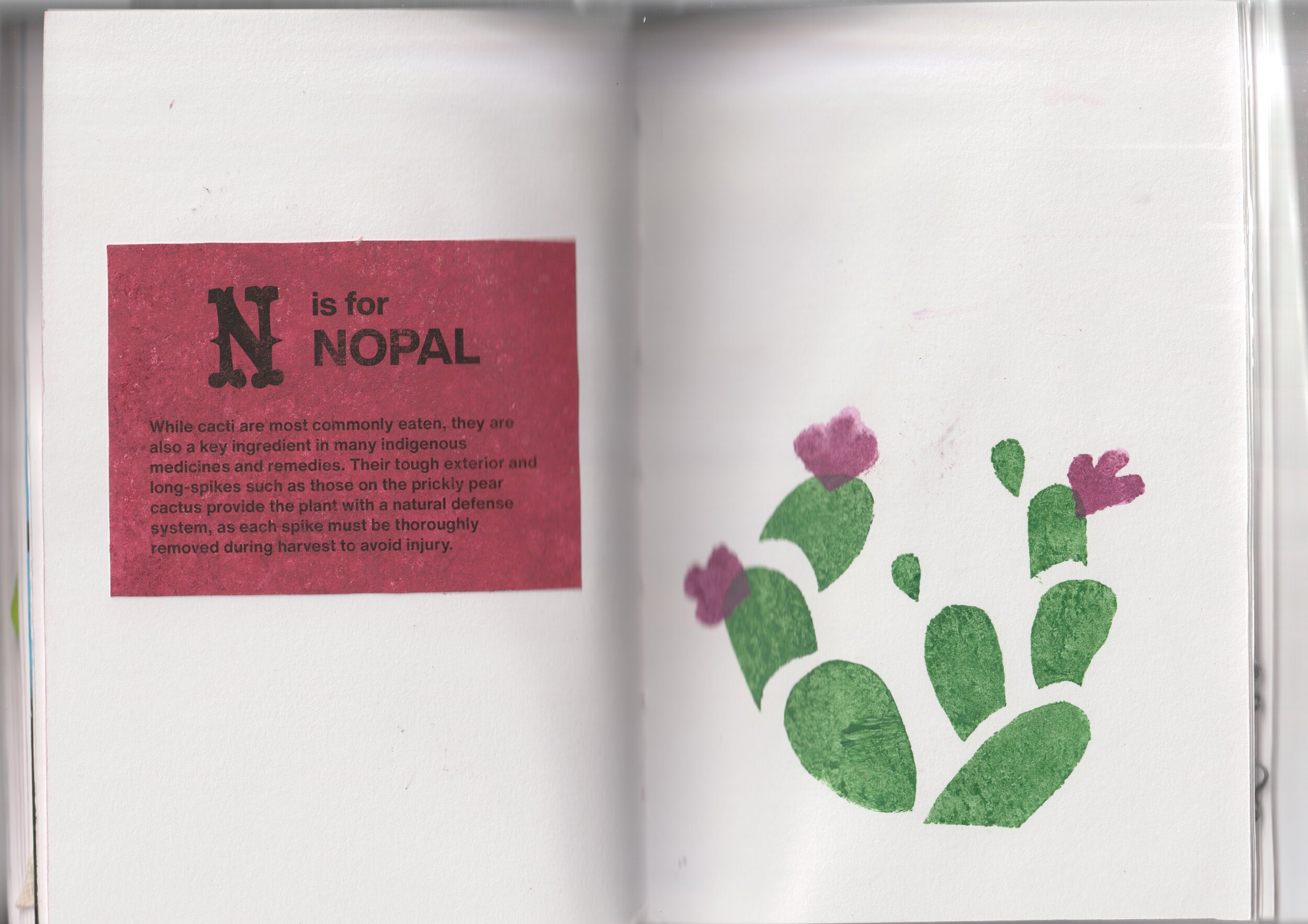
N is for NOPAL. While cacti are most commonly eaten, they are also a key ingredient in many indigenous medicines and remedies. Their tough exterior and long-spikes such as those on the prickly pear cactus provide the plant with a natural defense system, as each spike must be thoroughly removed during harvest to avoid injury.
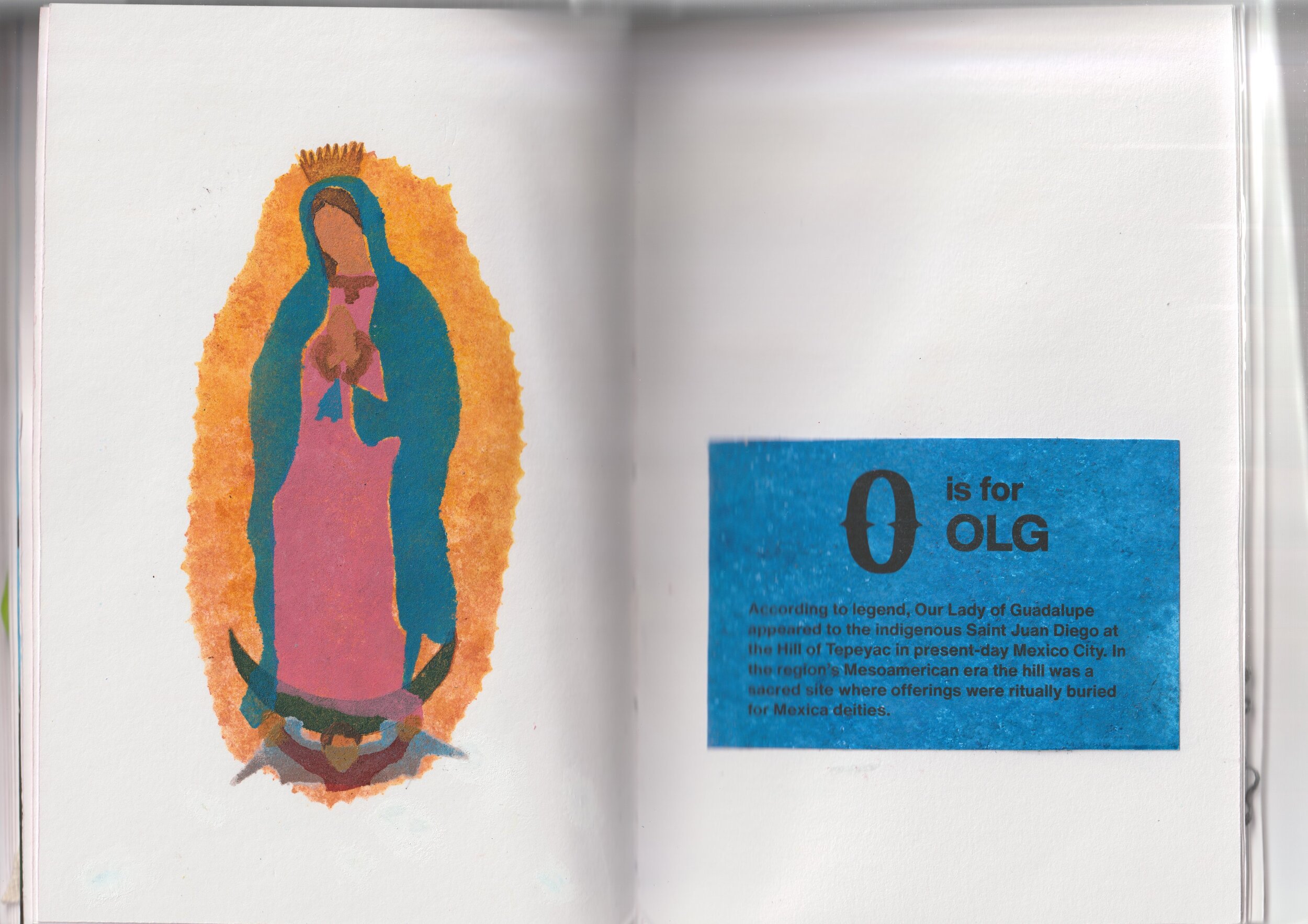
O is for OLG. According to legend, Our Lady of Guadalupe appeared to the indigenous Saint Juan Diego at the Hill of Tepeyac in present-day Mexico City. In the region's Mesoamerican era the hill was a sacred site where offerings were ritually buried for Mexica dieties.
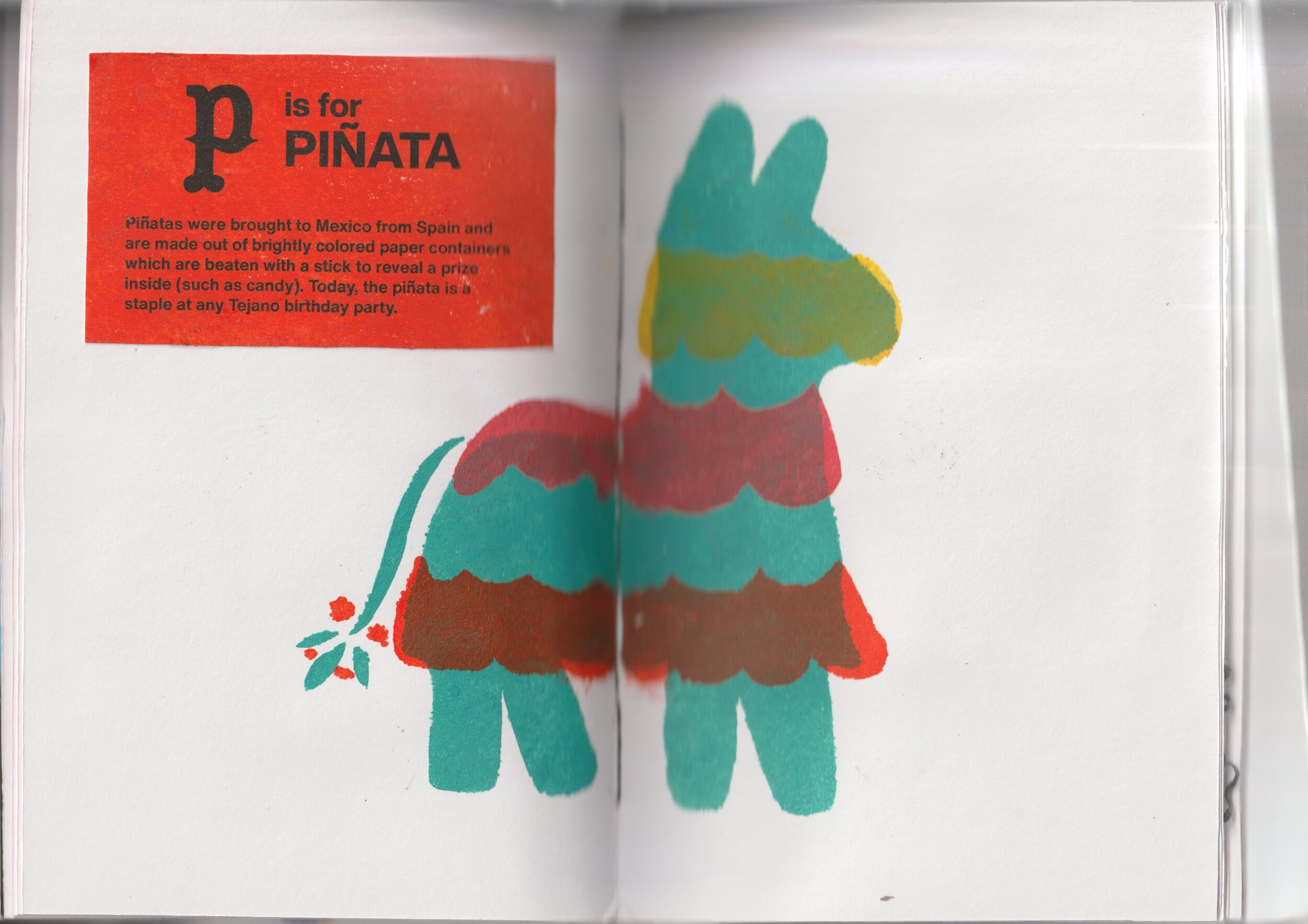
P is for PIÑATA. Piñatas were brought to Mexico from Spain and are made out of brightly colored paper containers which are beaten with a stick to reveal a prize inside (such as candy). Today, the piñata is a staple at any Tejano birthday party.

Q is for QUESO. Queso is the Spanish word for cheese, but it is also the name of the popular melted-cheese dish. Typically topped with peppers and spices, queso serves as a dip for chips or a topping on other Mexican dishes.
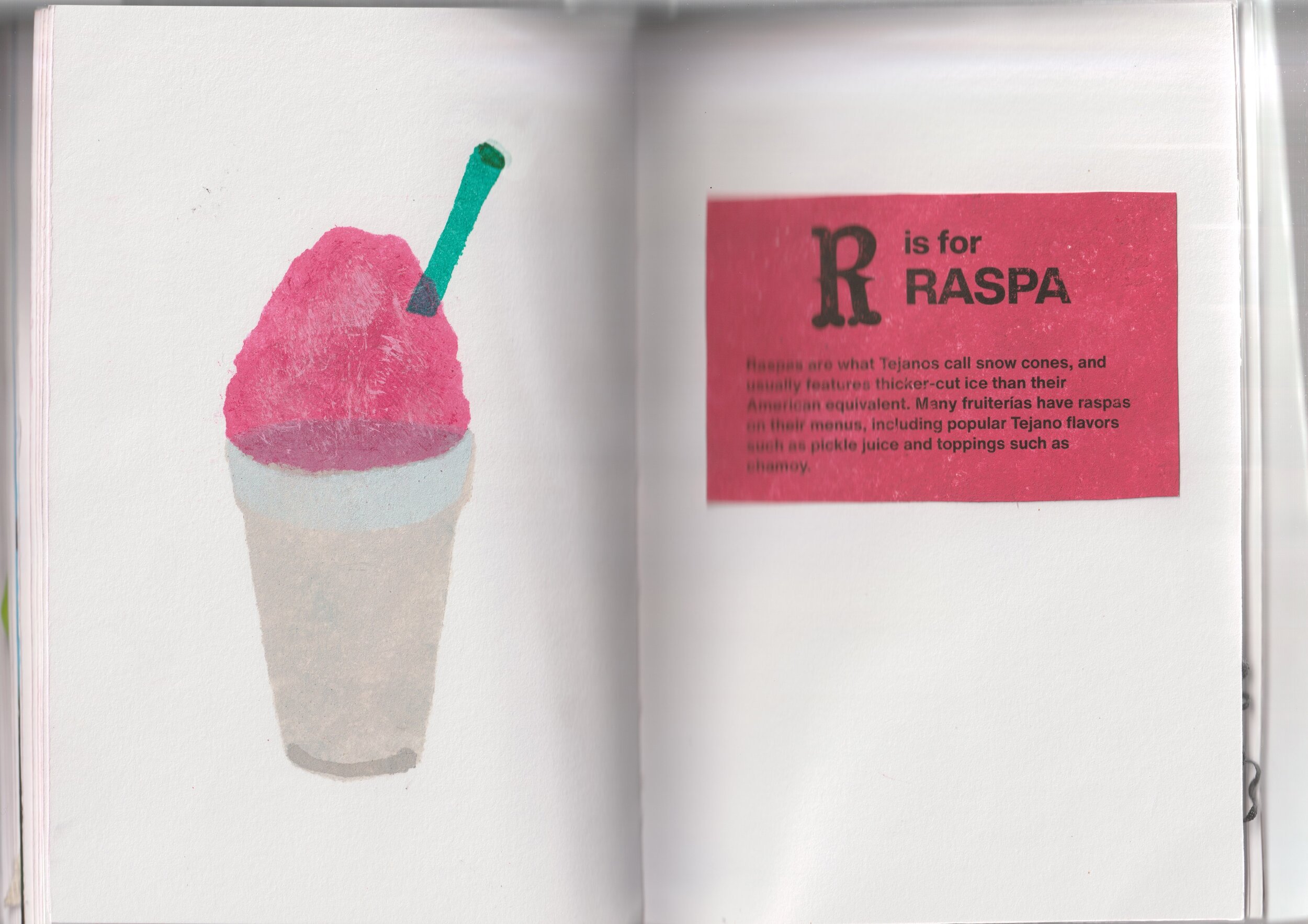
R is for RASPA. Raspas are what Tejanos call snow cones, and usually features thicker-cut ice than their American equivalent. Many fruiterías have raspas on their menus, Including popular Tejano flavors such as pickle juice and toppings such as chamoy.
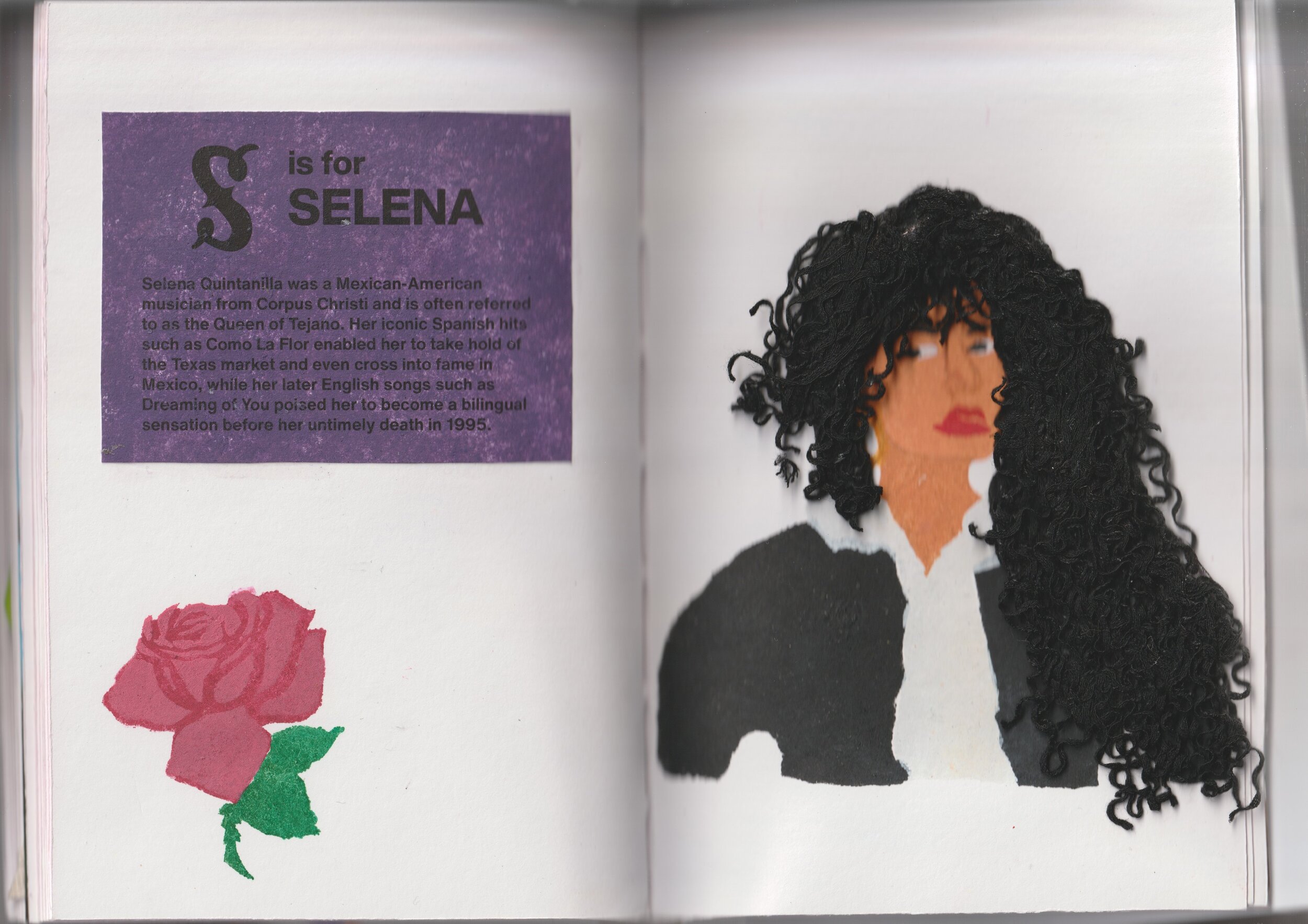
S is for SELENA. Selena Quintanilla was a Mexican-American musician from Corpus Christi and is often referred to as the Queen of Tejano. Her iconic Spanish hits such as Como La Flor enabled her to take hold of the Texas market and even cross into fame in Mexico, while her later English songs such as Dreaming of You poised her to become a bilingual sensation before her untimely death in 1995.
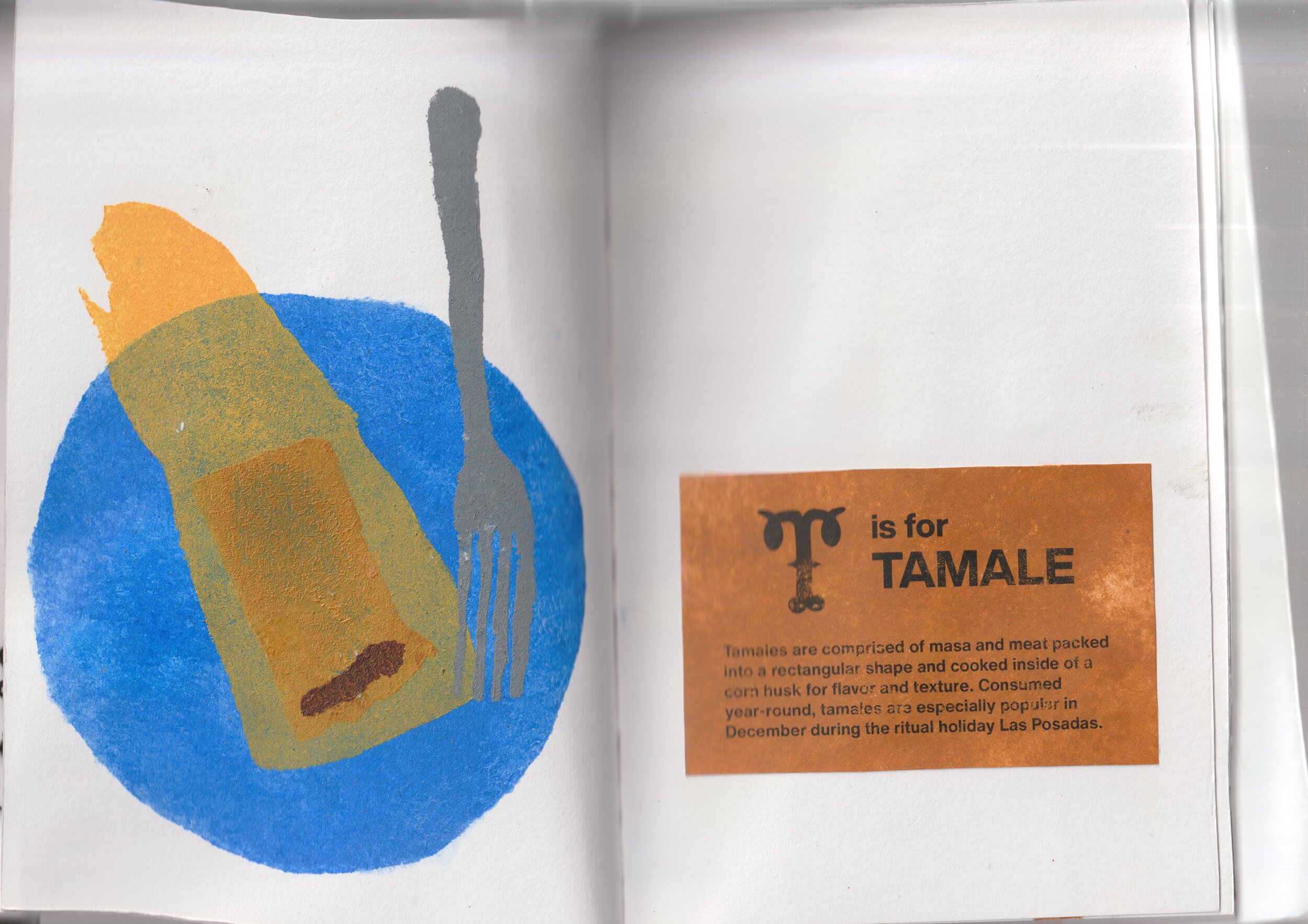
T is for TAMALE. Tamales are comprised of masa and meat packed into a rectangular shape and cooked inside of a corn husk for flavor and texture. Consumed year-round, tamales are especially popular in December during the ritual holiday Las Posadas.
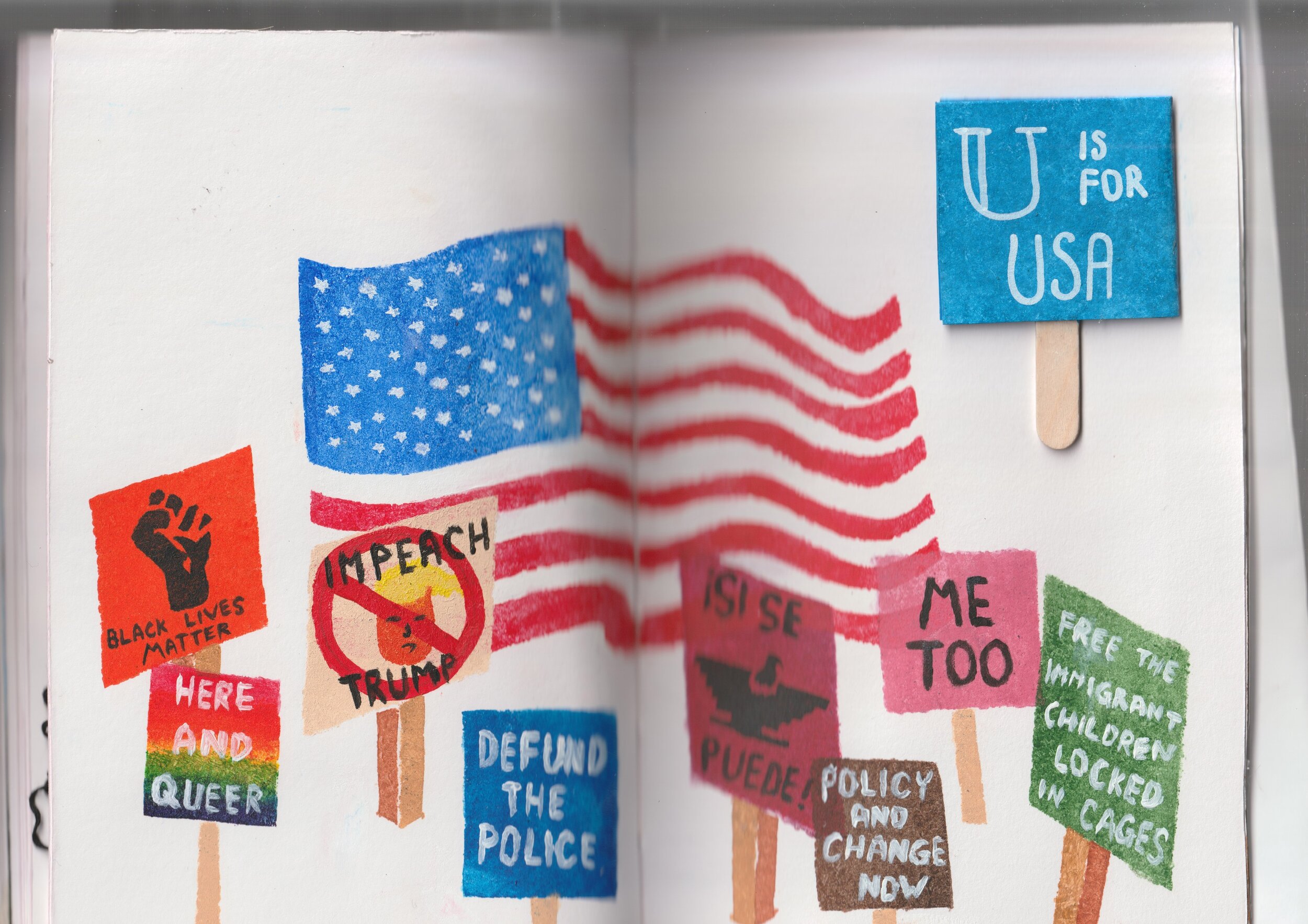
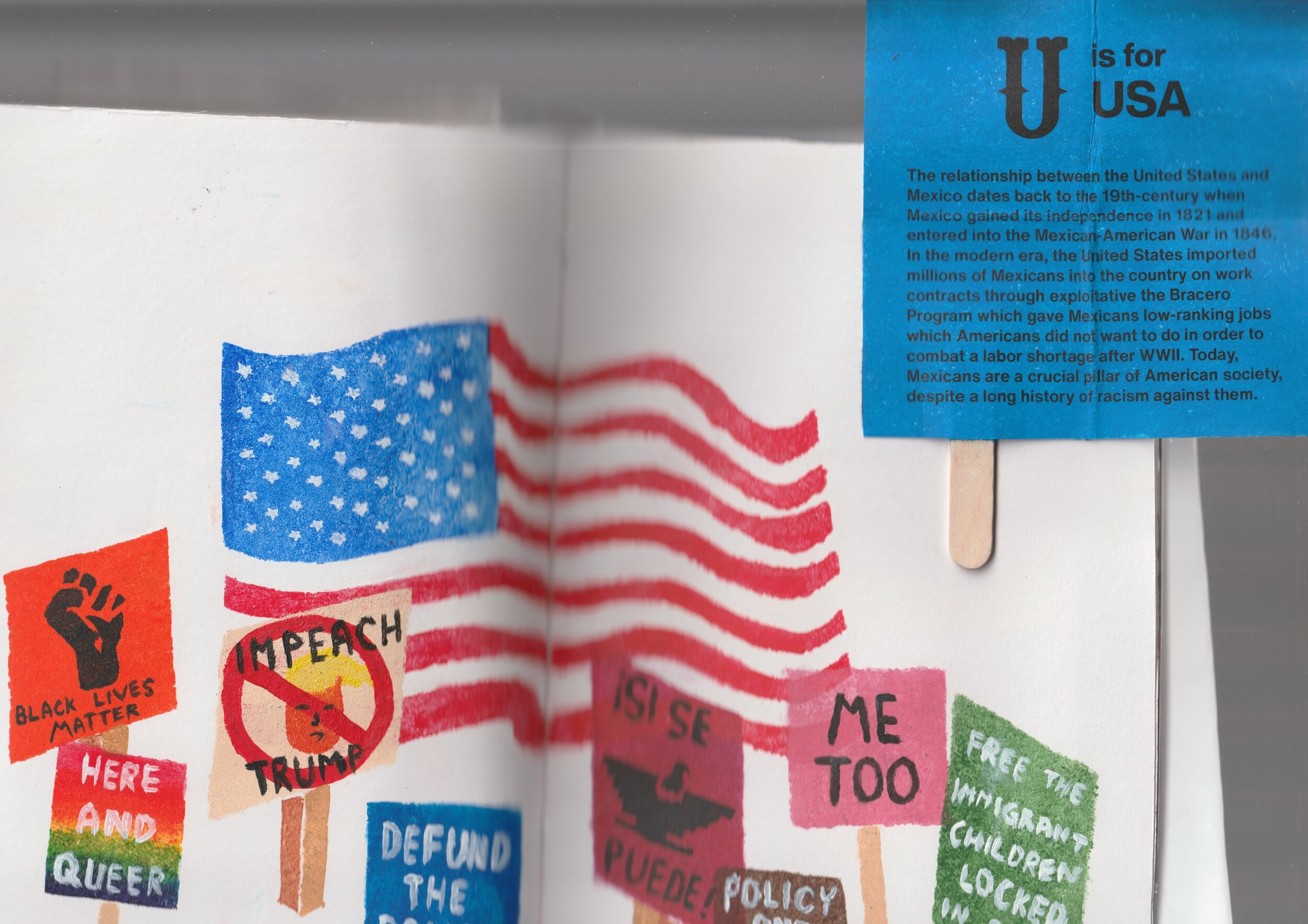
U is for USA. The relationship between the United States and Mexico dates back to the 19th-century when Mexico gained its independence in 1821 and entered into the Mexican-American War in 1846. In the modern era, the United States imported millions of Mexicans into the country on work contracts through the exploitative Bracero Program which gave Mexicans low-ranking jobs which Americans did not want to do in order to combat a labor shortage after WWII. Today, Mexicans are a crucial pillar of American society, despite a long history of racism against them.
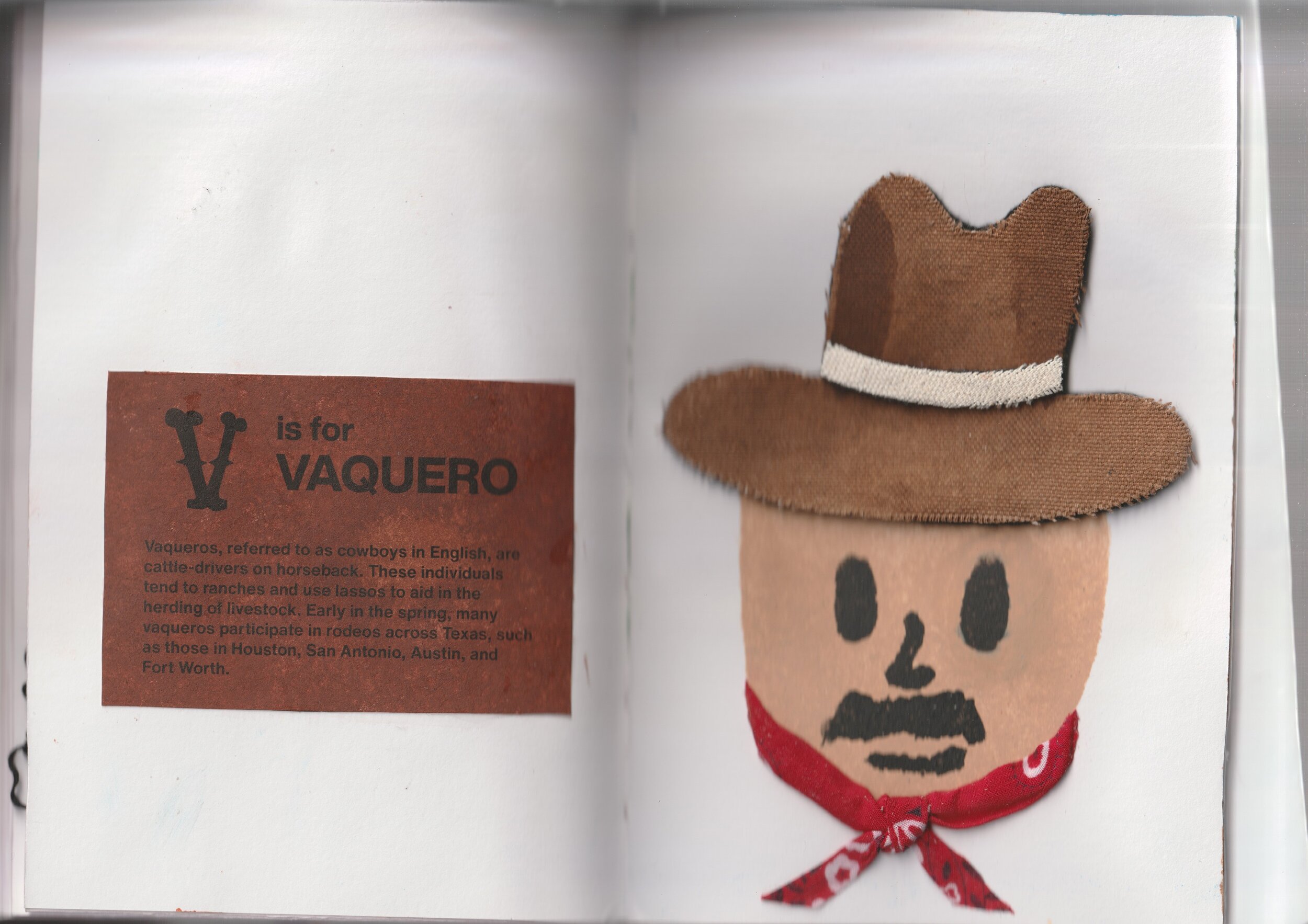
V is for VAQUERO. Vaqueros, referred to as cowboys in English, are cattle-drivers on horseback. These individuals tend to ranches and use lassos to aid in the herding of livestock. Early in the spring, many vaqueros participate in rodeos across Texas, such as those in Houston, San Antonio, Austin, and Fort Worth.

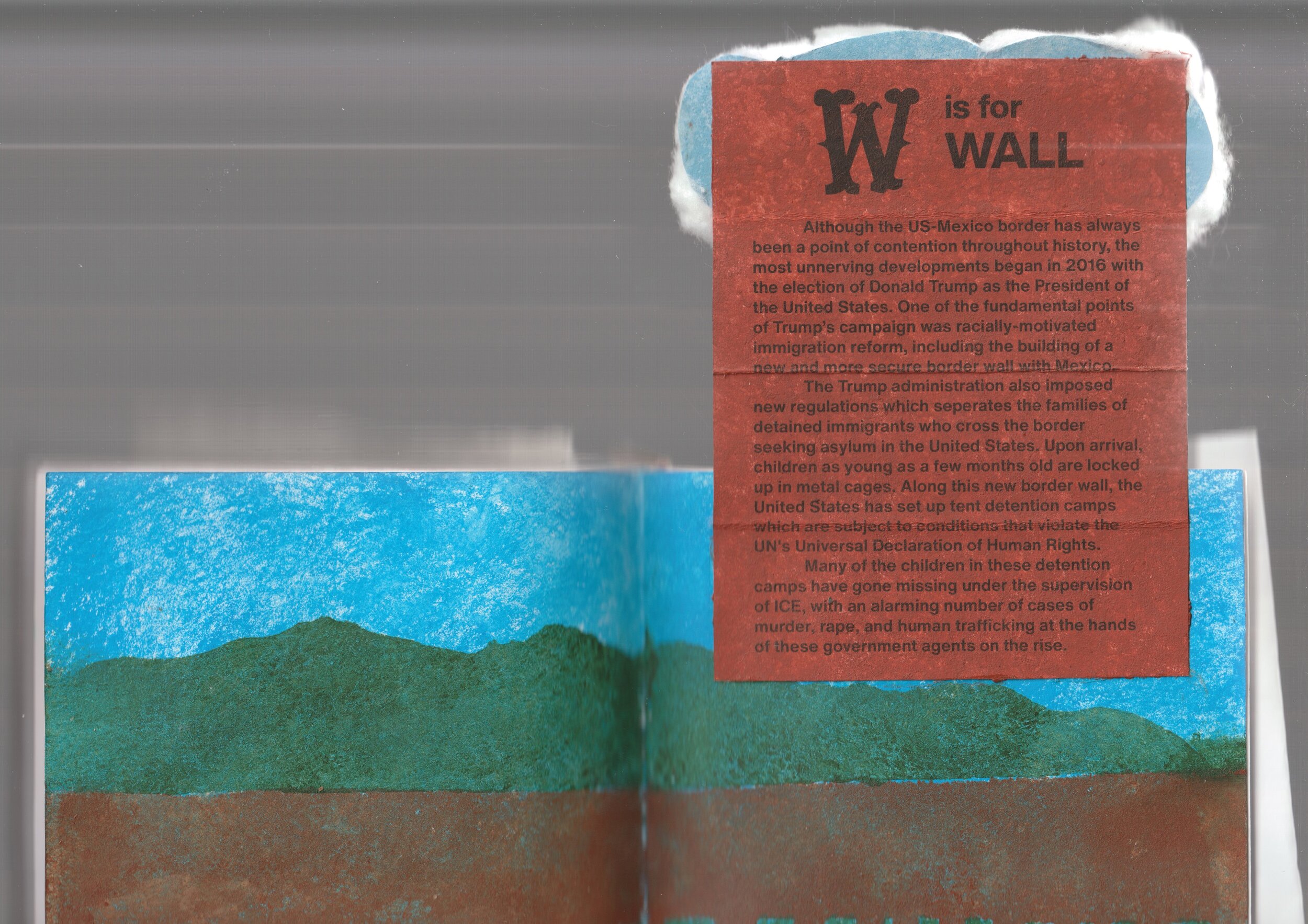
W is for WALL. Although the US-Mexico border has always been a point of contention throughout history, the most unnerving developments began in 2016 with the election of Donald Trump as the President of the United States. One of the fundamental points of Trump's campaign was racially-motivated immigration reform, including the building of a new and more secure border wall with Mexico. The Trump administration also imposed new regulations which separates the families of detained immigrants who cross the border seeking asylum in the United States. Upon arrival children as young as a few months old are locked up in metal cages. Along this new border wall, the United States has set up tent detention camps which are subject to conditions that violate the UN's Universal Declaration of Human Rights. Many of the children in these detention camps have gone missing under the supervision of ICE with an alarming number of cases of murder, rape, and human trafficking at the hands of these government agents on the rise.
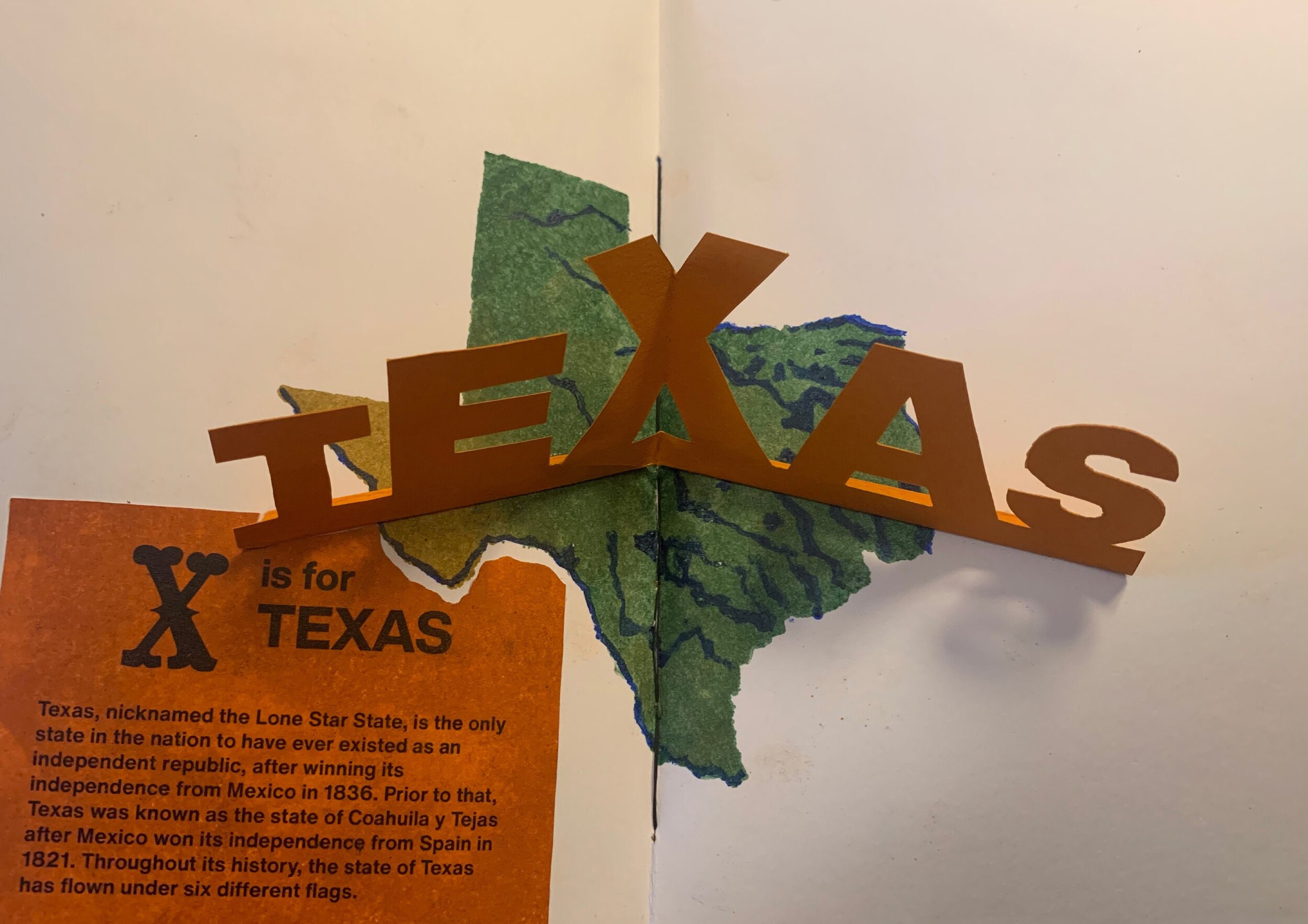
X is for TEXAS. Texas, nicknamed the Lone Star State, is the only state in the nation to have ever existed as an independent republic, after winning its independence from Mexico in 1836. Prior to that, Texas was known as the state of Coahuila y Tejas after Mexico won its independence from Spain in 1821. Throughout its history, the state of Texas has flown under six different flags.
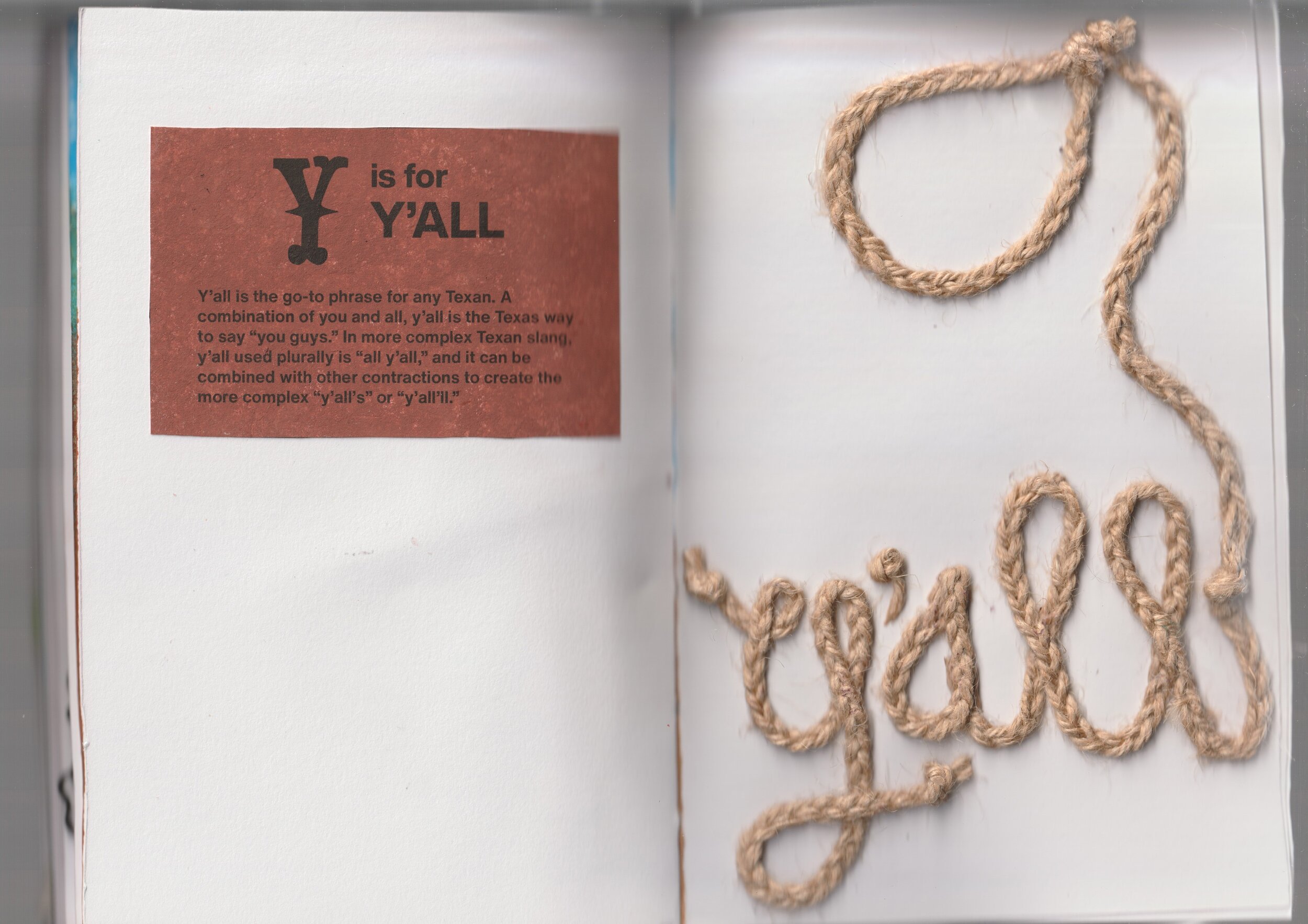
Y is for Y'ALL. Y'all is the go-to phrase for any Texan. A combination of you and all, y'all is the Texas way to say *you guys." In more complex Texan slang, y'all used plurally is "all y'all," and it can be combined with other contractions to create the more complex "y'all's" or "y'all'll."
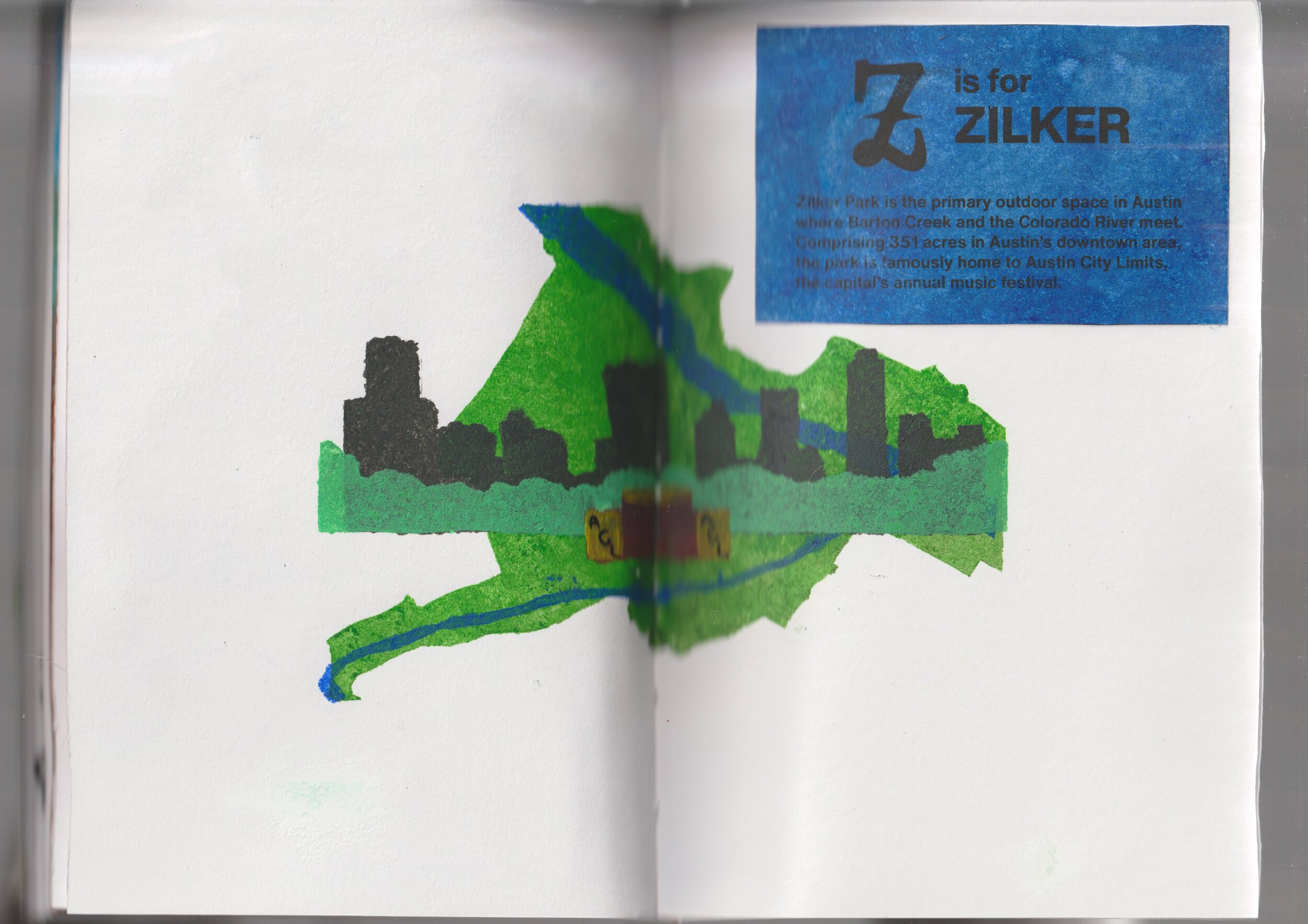
Z is for ZILKER. Zilker Park is the primary outdoor space in Austin where Barton Creek and the Colorado River meet. Comprising 351 acres in Austin's downtown area, the park is famously home to Austin City Limits, the capitol's annual music festival.

